Mata Hari
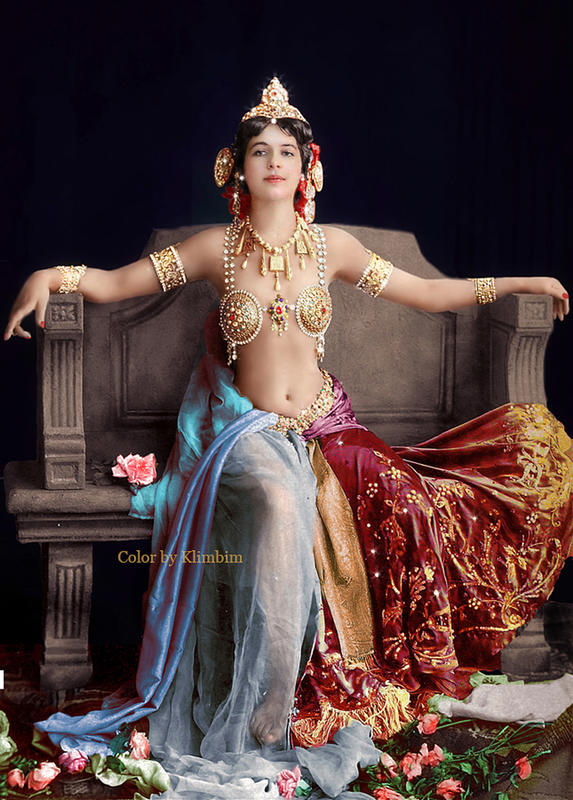
Margaretha Zelle, commonly known as Mata Hari, was a dancer and courtesan of Dutch descent whose lust for excitement culminated in her recruitment as a German spy during WWI. As a young woman, Zelle married a Dutch military officer with whom she moved to Java, where she became skilled in exotic dance. It was during this time that she adopted the name Mata Hari. At some point during WWI, Hari, now divorced, was recruited as a German spy. She was apprehended by French military intelligence officers, found guilty of espionage, and executed by firing squad. According to a witness, Hari’s final act was to defiantly blow a kiss at the men who were about to shoot her.
Black Tuesday
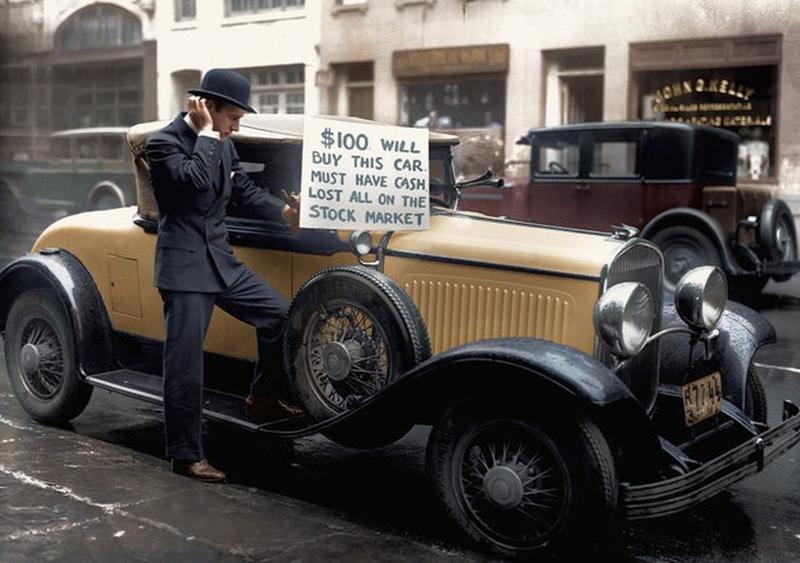
On October 20, 1929, the New York Stock Exchange crashed, taking the American economy with it. The date would come to be known as ‘Black Tuesday’, and it led to the financial ruin of thousands. In the six days leading up to the crash, investors attempted to stabilise wobbly markets by buying up huge blocks of stock. Whilst this temporarily delayed the market from unravelling, it also meant that investors were wildly overexposed, and, when stock prices finally collapsed, billions of dollars were wiped out in an instant. The losses weren’t confined to financial institutions: Black Tuesday sent shockwaves through the global economy and tipped the United States into the Great Depression, which it would take more than a decade to recover from.
Into the jaws of death
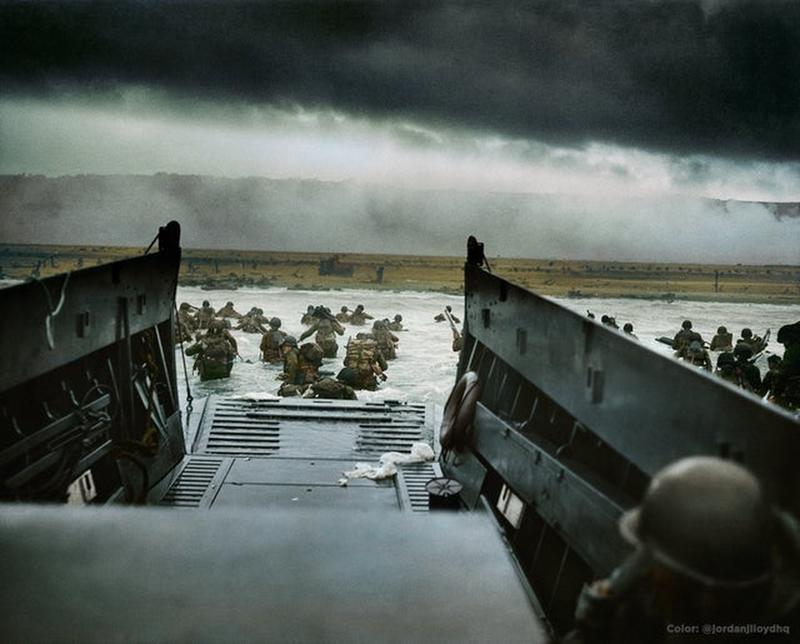
D-Day is widely regarded as one of the most crucial moments of WWII. Having thwarted Hitler’s plans to invade Britain, allied forces wanted to take the fight to the enemy and begin reclaiming territory in Europe, and British and US commanders identified the ideal location for an amphibious assault: Normandy beach. After a meticulously executed decoy operation, allied troops launched their attack, with air support and naval firepower providing cover as infantry landed on the beach and stormed heavily fortified German positions. After fierce fighting that claimed the lives of up to 13,000 men, allied forces took control of the beach, marking the first step in the liberation of France.
Marilyn Monroe
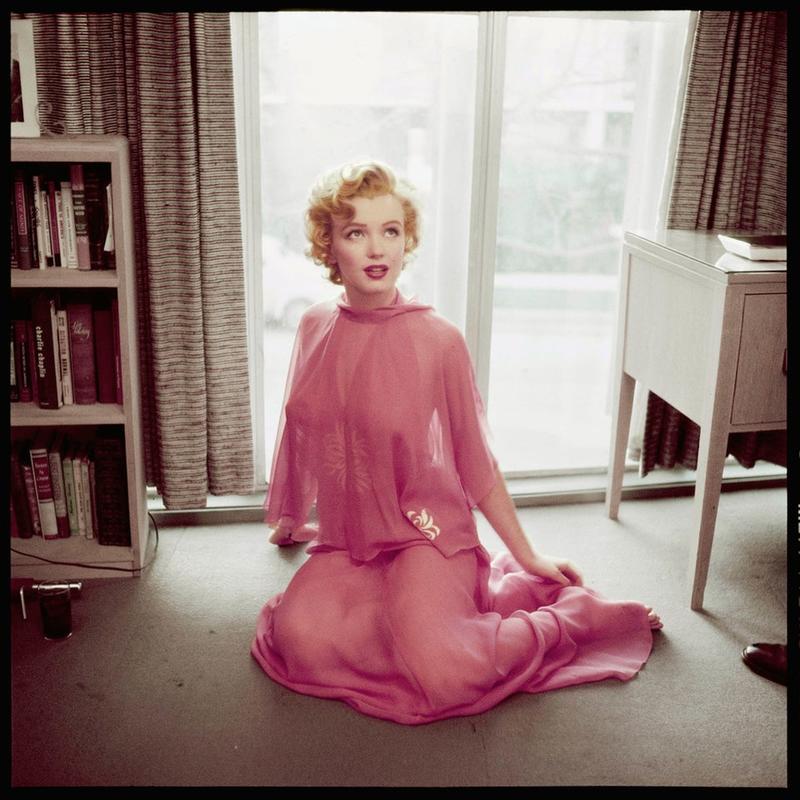
Marilyn Monroe remains one of the most iconic celebrities ever to emerge from Hollywood. At one point arguably the most famous person on Earth, Monroe was unable to handle the relentless pressures of life in the public eye, and in 1962 the starlet tragically took her own life. There are hundreds of timeless photos of Monroe, many of which, including this one, were taken by silent film star Harold Lloyd. After snapping this photo at Monroe’s apartment, Lloyd would go on to work with the starlet dozens of times. Monroe was fond of collaborating with the photographer, as his Greenacres estate granted her the seclusion she was sorely lacking in the rest of her life.
16-year-old German soldier
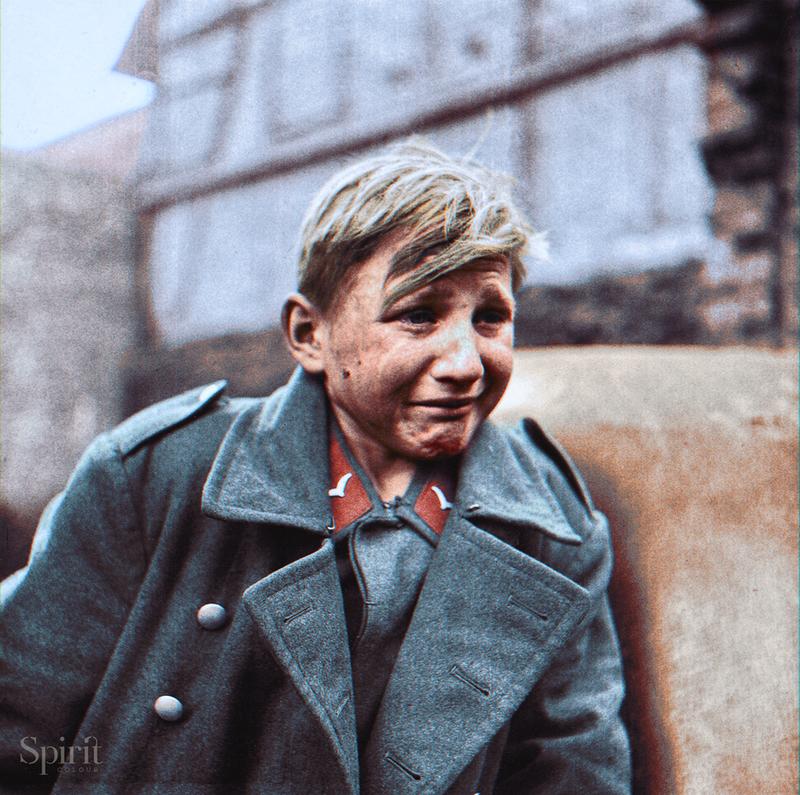
Finding an emotionally resonant WWII photo isn’t exactly a challenging task, but there’s something about this shot of a 16-year-old German soldier that conjures up particularly strong feelings. The soldier in the photo was Han-Georg Henke, and it was taken shortly after he was captured by the US 9th Army on April 3, 1945, a matter of months before the end of the war. According to Henke, he joined the military after his parents passed away when he was 15, as he had no other means of supporting his younger siblings. What makes this photo so evocative is the questions it raises. It is unclear whether Henke is crying out of fear, shame, or simply because of the horrors he had witnessed.
The tallest, shortest, and fattest man of Europe
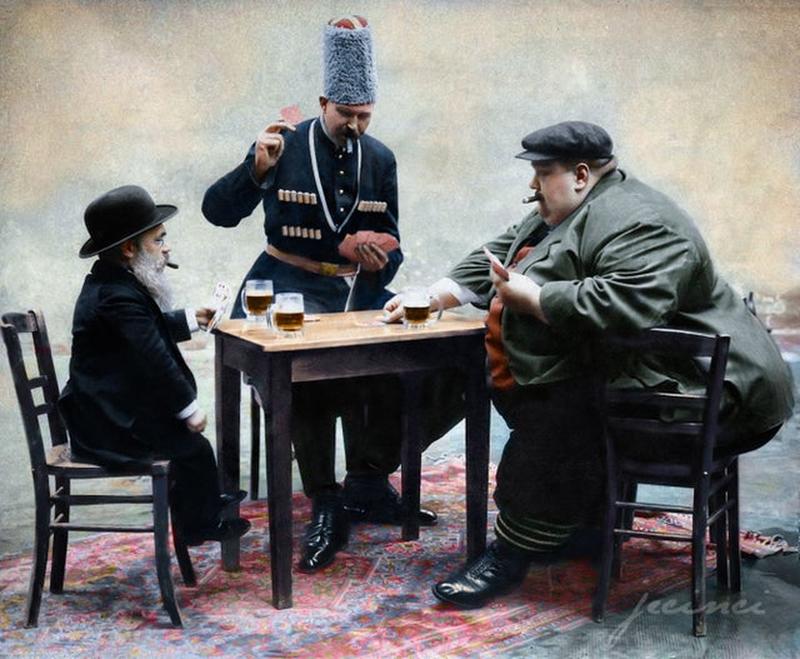
There’s something endearing about this photo. The dwarf’s identity is unknown, but the other two are Cornelius Bruns, aka Europe’s tallest man, and Daniel Lambert, who was affectionately known as Cannon Colossus for obvious reasons. Little is known about Bruns, but Lambert was an animal breeder from Leicester. Astonishingly, he maintained that the reasons for his large stature were mysterious, as he ate little and was athletically active, a claim which was given credibility by the fact that he actually gained weight during a stint of poverty. Lambert was eventually forced to begin putting himself on exhibition to pay his bills, and many who who met him reported being highly impressed by his intellect and charisma.
Unpacking Mona Lisa
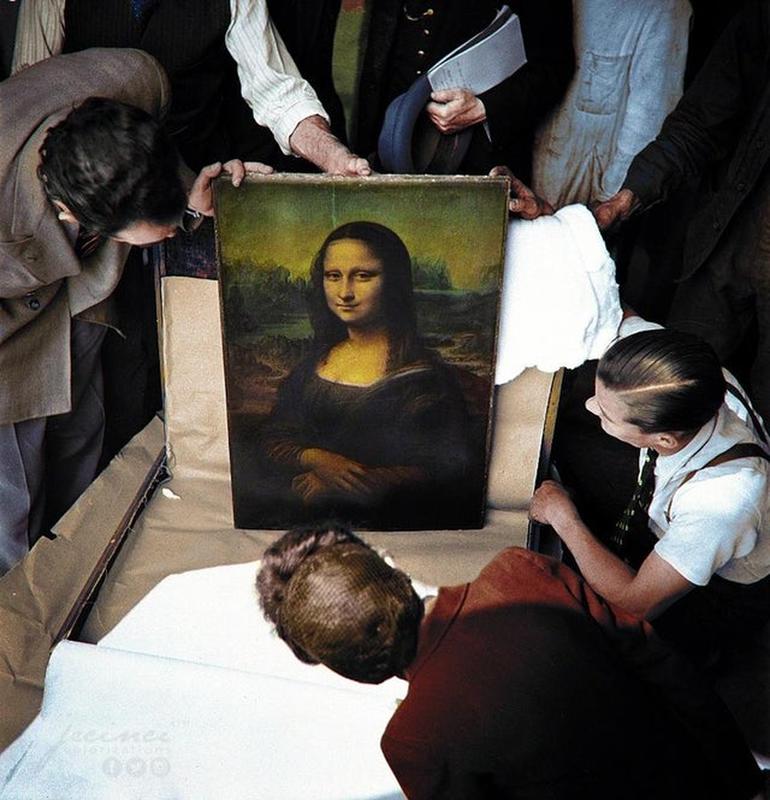
The Mona Lisa is perhaps the single most famous painting in the world, and unsurprisingly it has been stolen multiple times. Its most notable theft was committed by Vincenzo Peruggia, an Italian handyman in Paris who stole the painting by removing it from its frame when no one was looking, concealing it under his jacket, and strolling out of the Louvre. During WWII, Jacques Jaujard, the director of France’s National Museums, smuggled hundreds of artworks, including the Mona Lisa, out of the Louvre to keep them from falling into Nazi hands. The artworks were packed into wooden crates, marked with red dots to indicate significance, and then stealthily transported by truck to the Loire Valley.
Carl Akeley posing with the leopard he killed
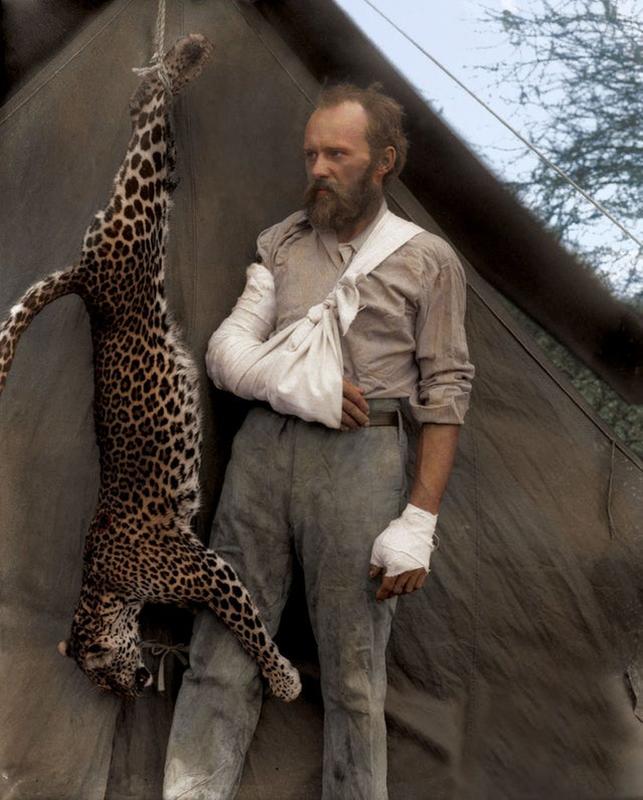
Carl Akely was the an explorer who is considered the father of modern taxidermy. Akely was utterly committed to his craft, believing it was possible to stuff dead animals in a way that made them seem lifelike. Before his innovations, taxidermists had crudely stuffed their subjects with whatever was to hand. Akely, by contrast, meticulously studied the bodies of his animals before building a model of them from the skeleton up, which he would then furnish with the animal’s pelt. In 1896, whilst in Somaliland, Akely found himself face to face with an angry leopard. As the animal attacked, Akely thrust his right hand into its mouth to prevent it from biting him, before throttling it with his left. Akely occasionally expressed unease about shooting animals, but was understandably untroubled by having bested a leopard in primal combat.
Young Brigitte Bardot
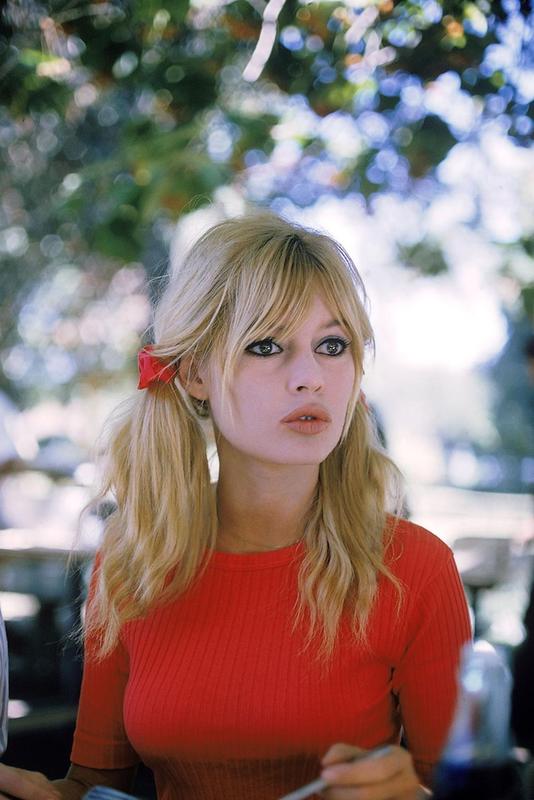
Brigitte Bardot was a French actress, model, and sex symbol, who remained wildly popular for much of the 50s and 60s. Bardot originally had aspirations as a professional ballerina, but transitioned into acting in 1952 and went on to star in many acclaimed films, often playing hedonistic, sexually free characters. Bardot was also active in French intellectual circles, becoming a strong advocate for animal’s rights, and was described by Simone de Beauvoir as a “locomotive of women’s history”. Much like Monroe, Bardot struggled with the relentless attention that came with superstardom, once revealing in an interview, “I don’t know what it means to sit quietly in a bistro, on a terrace, or in the theatre without being approached by someone”.
Arsenal goalkeeper Jack Kelsey
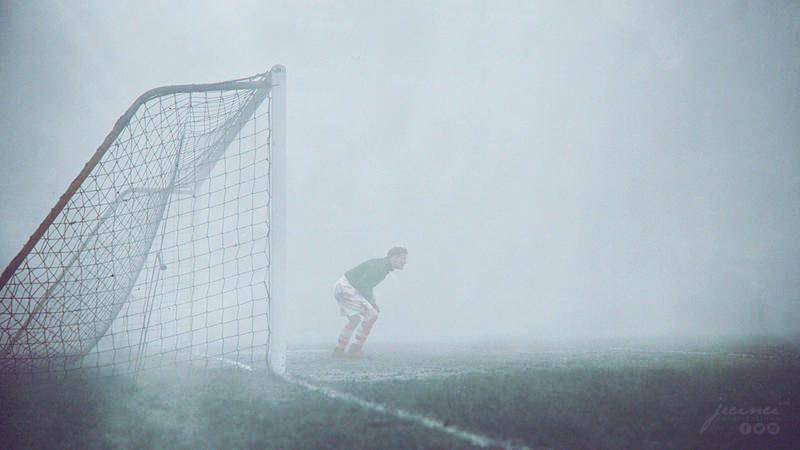
Whilst this image of Arsenal goalkeeper Jack Kelsey in during a match in 1954 is still a great photo, it is often misattributed to a story from 1937 in which a goalkeeper is unable to see that the game has ended, due to the thick fog, resulting in him standing on his goal-line for 15 minutes. That incident actually occurred on Christmas Day in 1937, and took place during a Chelsea game. The match was called off after 61 minutes, but Chelsea keeper Sam Bartram didn’t get the memo and he continued to guard his goal after everyone else had headed back to the changing rooms.
Ruby Bridges escorted by U.S. Marshals
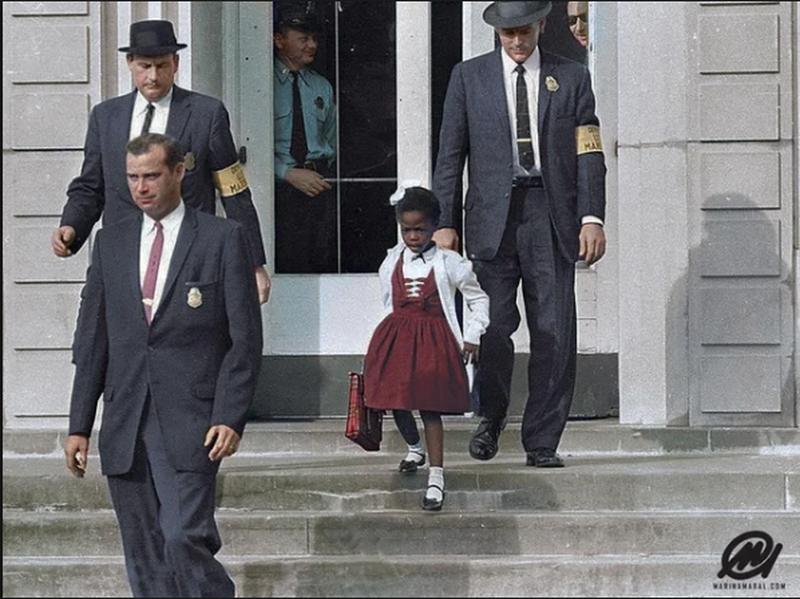
Brown vs Board Of Education remains one of the most pivotal moments in the history of American civil rights. Oliver Brown, the father of a child who was denied entry to a white school, took the education system to court in 1954, and on May 17, the Supreme Court sided with Brown in a landmark ruling. Whilst initially just applicable to Kansas, the ruling paved the way for desegregation across the South, and in November 1960 Ruby Bridges became the first Black child to integrate into a white elementary school. Despite only being six years old, Bridges was on the receiving end of multiple death threats, necessitating an escort of federal martials to ensure her safety.
The Kiss of Life
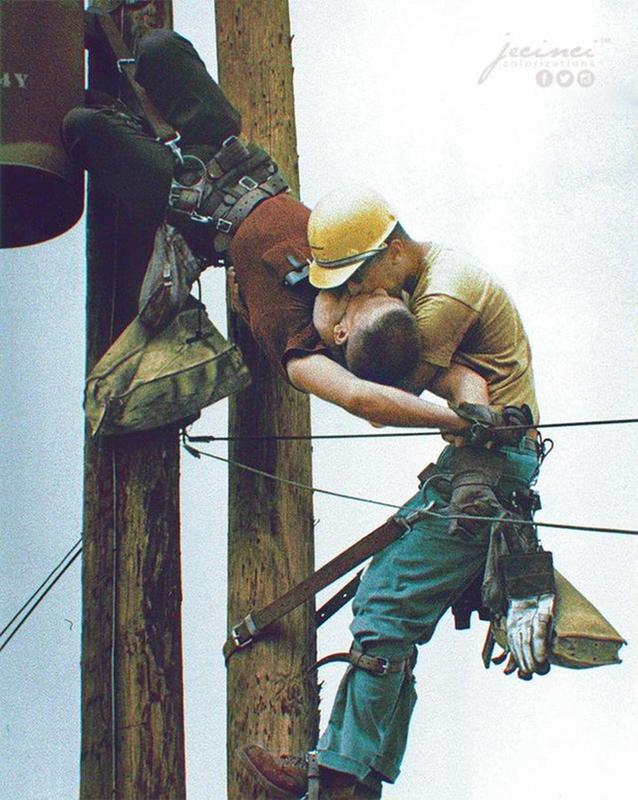
In 1967, utility workers Randall G. Champion and J.D. Thompson were carrying out routine maintenance on a telephone line with Champion accidentally touched a low voltage power line. The resulting electrocution stopped his heart and he tumbled back, dangling from his harness. Thompson reacted quickly, grabbing his stricken coworker and performing mouth to mouth resuscitation until he felt his pulse resume, before removing Champion from his harness and lowering him to the ground. The remarkable incident was captured by photographer Rocco Morabito, who was on his way to an assignment when he was alerted to the unfolding drama by the sounds of screaming. Morabito’s professional instincts kicked in and he quickly raised his camera and captured the moment, eventually winning the Pulitzer Prize for Spot News Photography for the resulting shot, which is known as “The Kiss Of Life”.
German soldier with a saw tooth bayonet
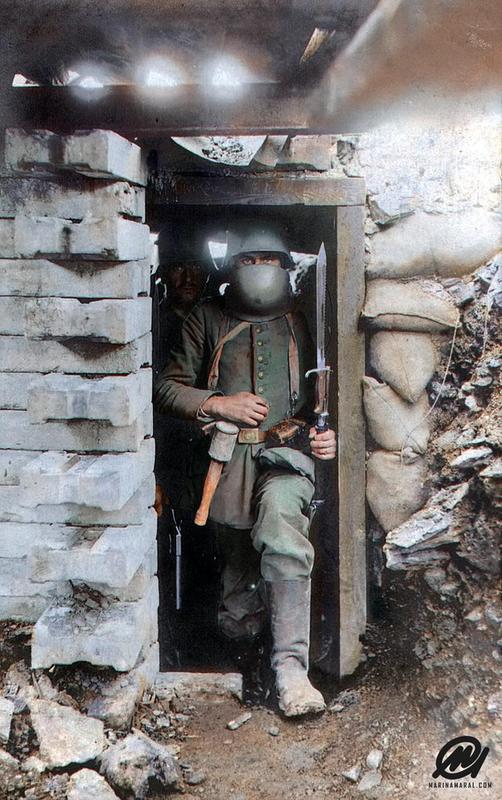
The tactic of digging defences trenches dates back to the 17th century, and it became the backbone of WWI military strategy due to massive advances in weapons technology and firepower. Trench warfare followed a brutal cycle of opposing forces attempting to storm each other’s trenches, with the dreaded command “over the top” serving as the signal to scramble up out of your trench and charge across no-man’s land towards the enemy’s heavily fortified position. Such attacks invariably involved huge casualties, and even if you made it to the enemy trench you would find yourself desperately fighting for your life in vicious close quarters combat, often involving bayonets.
Elizabeth Taylor on the set of Giant
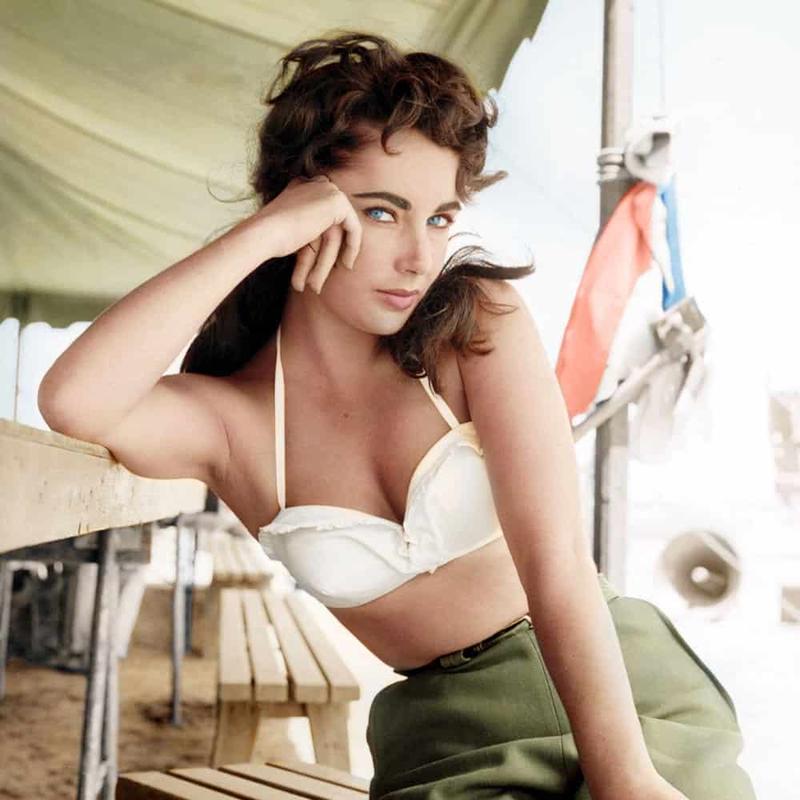
Elizabeth Taylor was a larger-than-life superstar whose chaotic personal life was never far from the headlines. Taylor struggled throughout her life with addiction to alcohol and painkillers, and her relationships were often turbulent – the starlet was married eight times, to seven different men. Taylor starred in at least 33 films, including Giant, which saw her acting alongside James Dean and Rock Hudson. Later in life, when asked about the film in an interview, Taylor revealed that, “it’s been a long time since I’ve seen Giant. I don’t look at old movies of myself. I don’t even look at new ones of myself. But I loved Jimmy and I loved Rock”.
Night fishing in Hawaii
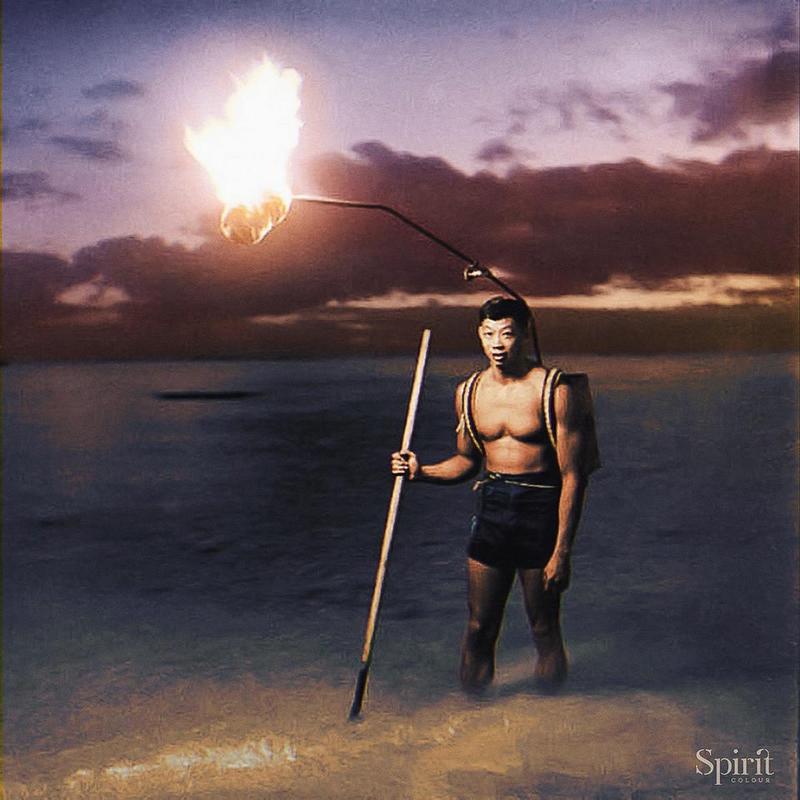
This photo is testament to the spirit of human ingenuity. It depicts a native Hawaiian fisherman embarking on one his nightly fishing trips. Hawaiians have used this technique for hundreds of years to hunt for species of fish that are only active during the nighttime. Armed with a wooden spear, the fishermen wade out into shallow water, with a flaming kukui-nut torch suspended over their heads from a bamboo pole. The torch serves two functions; it allows the fisherman to see his quarry, and also entices the fish to the surface, where they are speared with surgical precision. Seafood made up a large part of the diet of native Hawaiians, who often consumed fish raw.
Charlie Chaplin accompanied by Albert Einstein
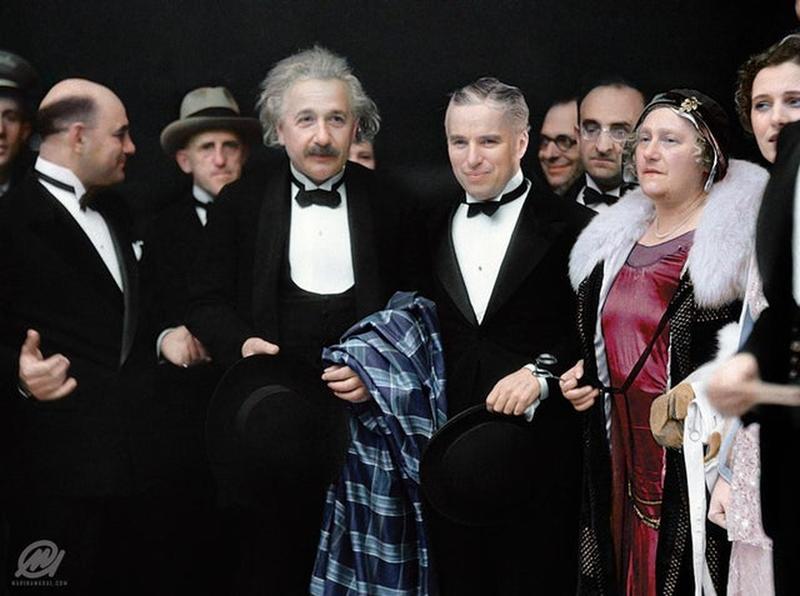
Despite being one of the brightest minds in history, Einstein was far from the stereotypical nerd. He was known to be funny, charismatic, and was often the life and soul of the party. When he wasn’t busy tackling the problems of space-time, Einstein was known to take great pleasure in the work of Charlie Chaplin. The two would eventually forge a close friendship, having been introduced by the head of Universal Studios. In 1931, Chaplain invited Einstein and his wife, Elsa, to the London premier of City Lights. In a witty exchange between the two great men, Einstein admitted to Chaplin that he was envious of the actor, as the whole world understood him without the need for a single word, to which Chaplin replied, “but your fame is even greater… the world admires you when nobody understands you.”
Band of brothers
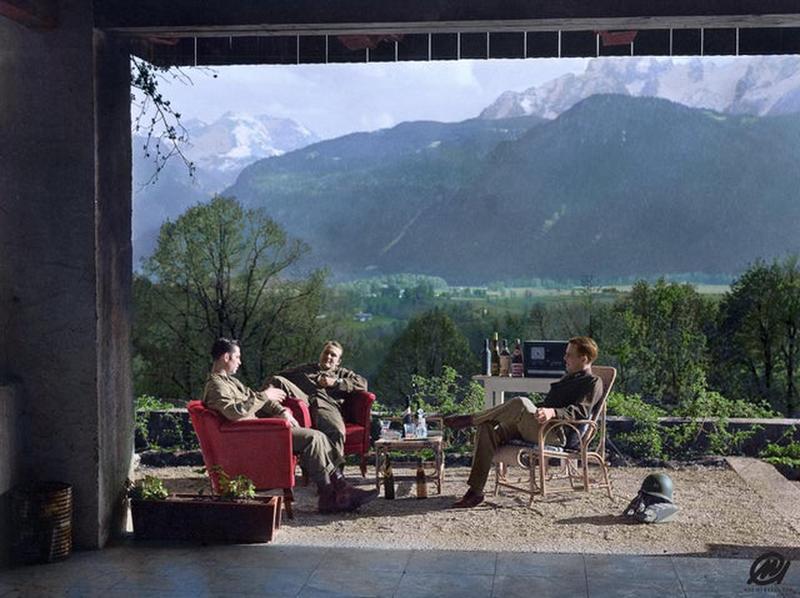
Hitler was known for his decadent tastes, and during the course of his rule over Germany he acquired a series of grandiose residencies spread across the country. When Germany’s military finally collapsed in 1945, allied forced swept through the country and seized Hitler’s properties, including this one in the Obersalzberg region of the Bavarian Alps, near the town of Berchtesgaden. Shortly after the SS retreated, French and American troops reached the property, entering through a network of underground tunnels. The allied soldiers availed themselves of the luxuries at hand, including expensive alcohol, and enjoyed some much deserved downtime on the property’s porch.
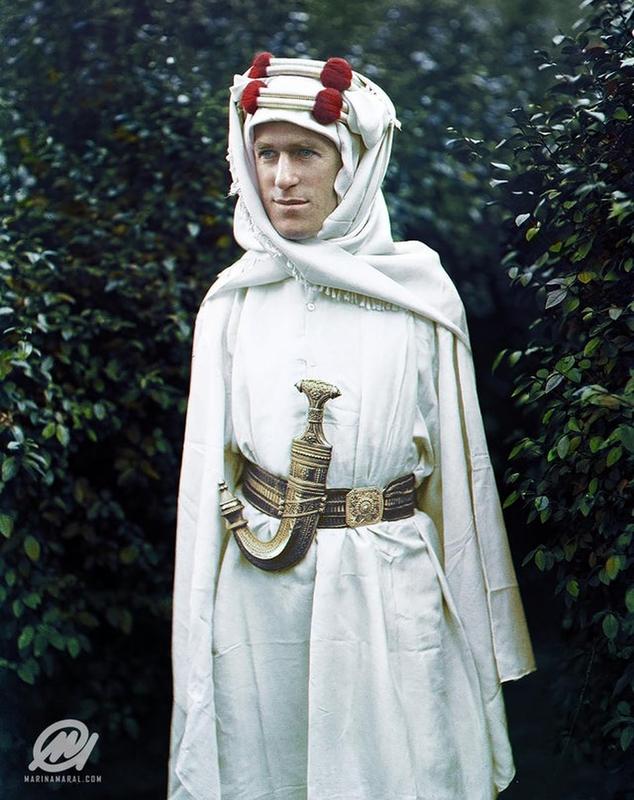
Colonel Thomas Edward Lawrence was a demolition expert operating in the Middle East during WWI, whose daring exploits earned him much fame after the war came to an end. Lawrence worked with Arab rebels to undermine the Ottoman Empire’s logistics lines by blowing up key bridges and depots. His work was prolific, and he claimed to have destroyed 79 railway bridges, crippling the Ottoman’s ability to resupply its troops. After the war, Lawrence’s WWI missions would be immortalised in the 1963 historical epic Lawrence Of Arabia.
The smallest man in the world dances with his pet cat
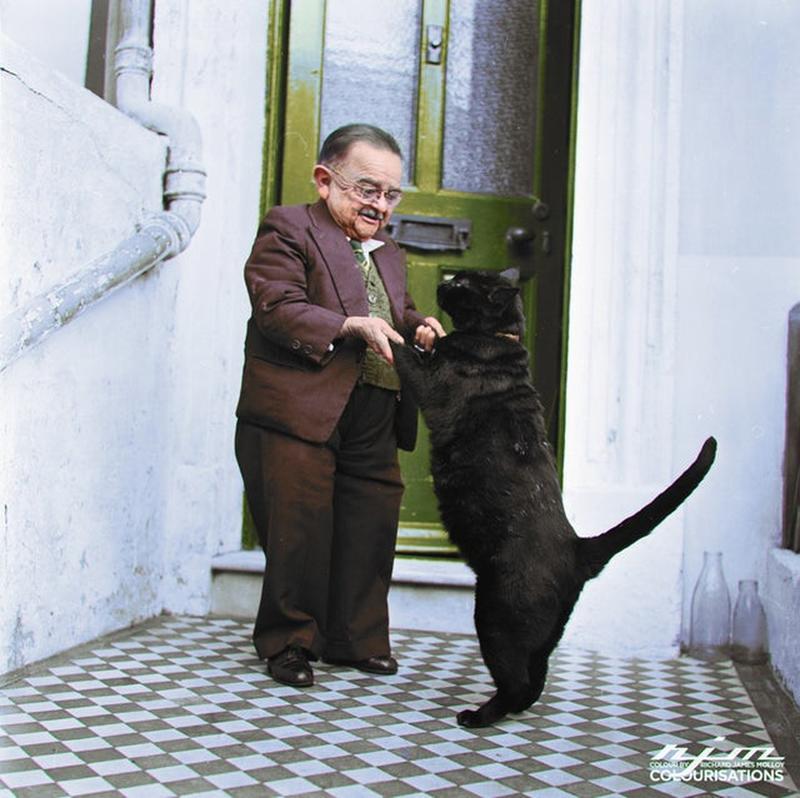
During his lifetime, Henry Behrens was the world’s smallest man, standing at a diminutive 30 inches and weighing only 32 pounds. The dwarf was able to make a decent living as a curiosity, capitalising on the public’s fascination with “abnormalities” during the 40s and 50s, and apparently thrived in the spotlight. This photo of Behrens dancing with his pet cat highlights quite how small he was, and he often danced with the feline when he was posing for shots. At the time of his death, Behrens was still the world’s shortest man, but his crown has since been taken by Chandra Bahadur Dangi, a primordial dwarf who stood at 21.5 inches.
Japanese-American college students during their relocation to an internment camp
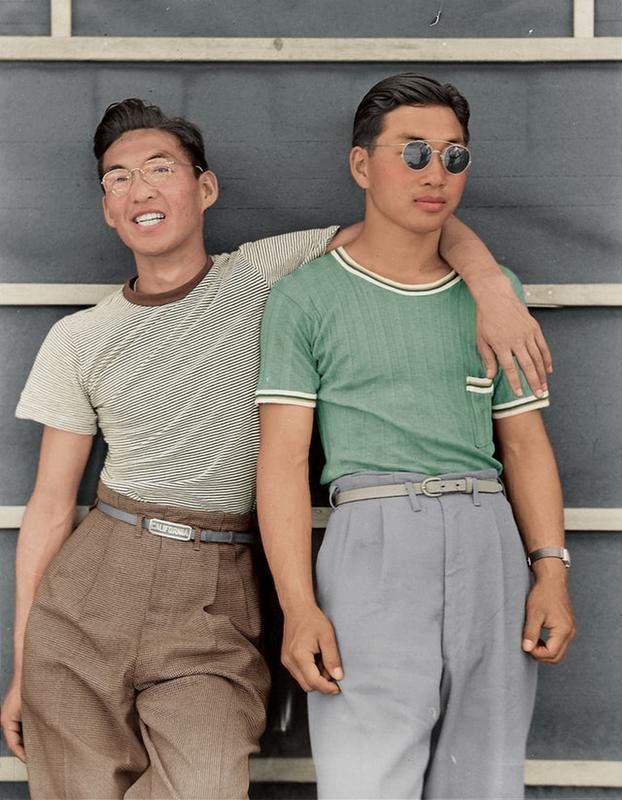
After the Emperor of Japan ordered his airforce to launch a preemptive strike on the American navy stationed in Pearl Harbour, Japanese-American citizens found themselves being rounded up and sent to bleak internment camps, ostensibly for “security reasons”. The camps amounted to little more than prisons, with one captive later recounting, “The only thing that was in the ‘apartments’ when we got there were army metal beds with the springs on them, and a potbellied stove in the middle of the room. That was the only thing. No chest of drawers, no nothing, no curtains on the windows. It was the barest of the bare.”
Lyndon B. Johnson takes the oath of office
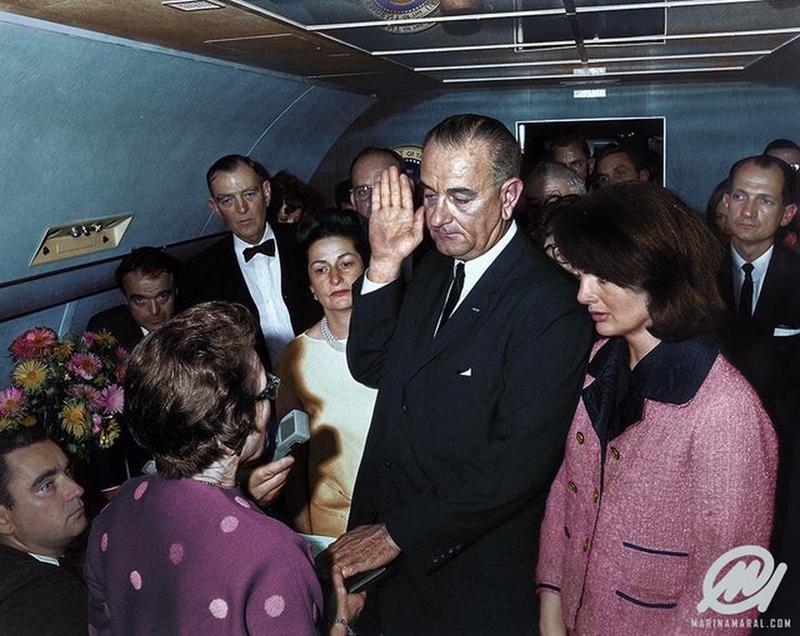
The assassination of US president John. F. Kennedy on November 22, 1963, remains one of the darkest moments in American history. The president was travelling in an open-topped motorcade when he was shot with a high-powered rifle, killing him instantly. For just over an hour and a half the US technically didn’t have president. Lyndon. B. Johnson, the Vice President, was then sworn in a sombre ceremony inside a grounded Air Force One. This photo captures the incredibly dark nature of Johnson’s ascension to the presidency, as a visibly in shock Jaqueline Kennedy, still wearing clothes stained with her husband’s blood, stands beside the new president as he makes his oaths.
Kobato Santaro wearing traditional armor
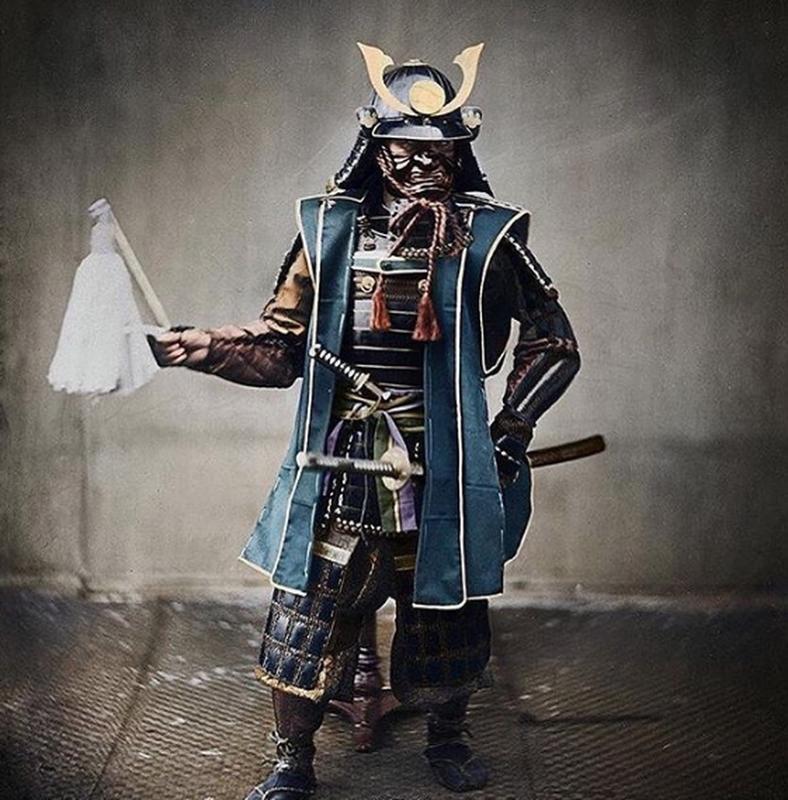
This photo was captured by Italian-British photographer Felice Beato, who subsequently coloured it by hand. Beato was fascinated by Japanese culture and took hundred of portraits documenting its customs and traditional attire. This image depicts the traditional armour of a samurai, a class of warrior nobles who served Japan’s rulers from the 12th century right up until the 1800s. The samurai were renowned for their combat prowess and strict codes of honour. A violent death was considered the noblest way to die, and samurai who brought shame on themselves could redeem their honour through sepukku, a ritual act of suicide in which the disgraced warrior would disembowel himself with a knife.
Auschwitz-Birkenau
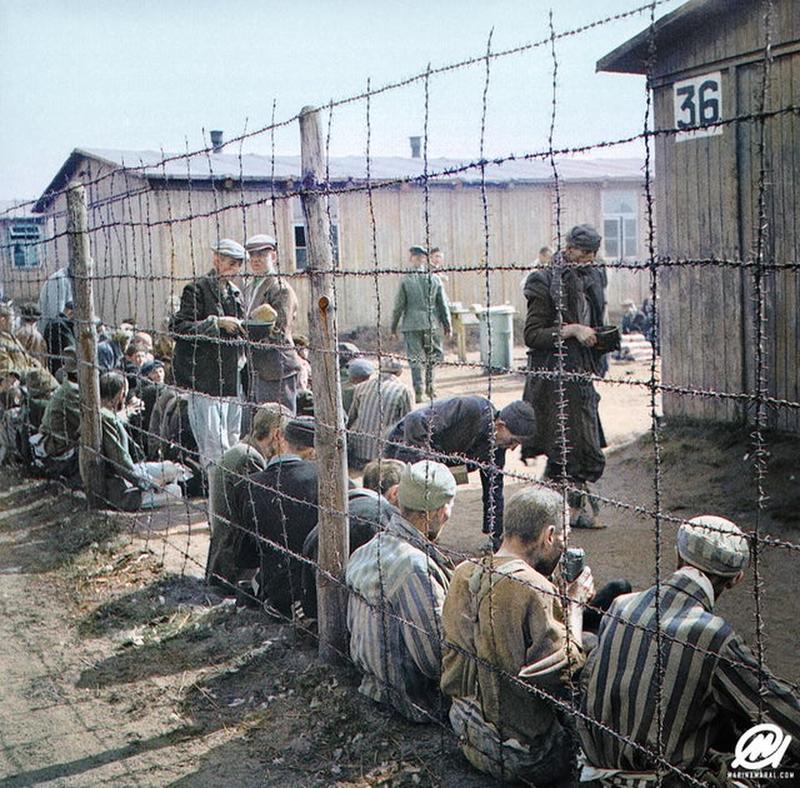
Hitler’s “final solution” to what he referred to as the “Jewish problem” led to the extermination of around six million European Jews in concentration camps. The most infamous camp, Auschwitz, was reached first by the Soviet Red Army. Initially believing the camp to be empty, shocked Russian soldiers soon discovered the camps emaciated inmates, with one soldier later recalling, “they rushed toward us shouting, fell on their knees, kissed the flaps of our overcoats, and threw their arms around our legs.” It is hard to imagine the relief that these prisoners felt at the sight of their liberators.
An unemployed lumber worker goes with his wife to the bean harvest
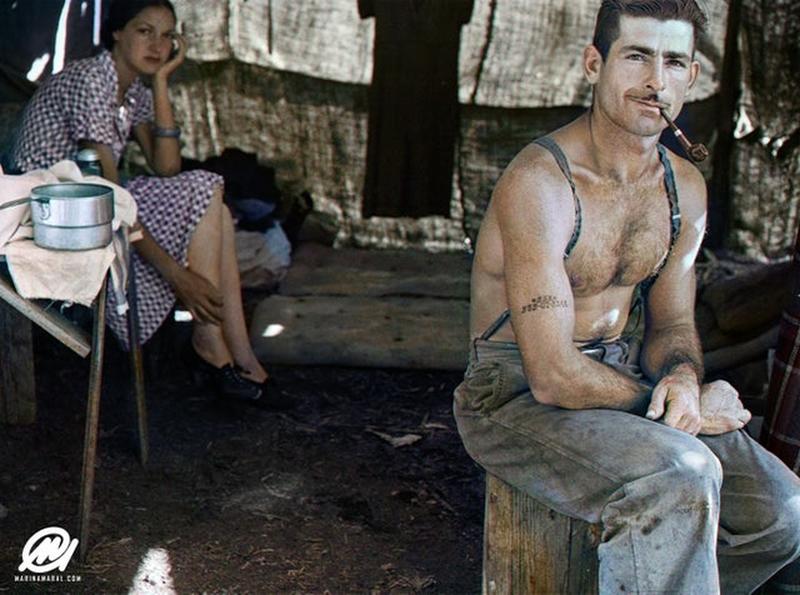
After Black Tuesday, the US entered the worst recession in history. The Great Depression went on for over ten years, and it wouldn’t be until the start of WWII that the US economy finally began to recover. This photo captures Thomas Cave and his wife Annie, a couple form Klamath Falls, Oregon. The couple found themselves jobless and unable to pay their rent, forcing them to depend on the meagre economic relief that was provided by the Social Security Act. In order to ensure that he didn’t lose his social security number, and thus access to the program’s handouts, Cave had it tattooed on his arm.
Homecoming Soldier
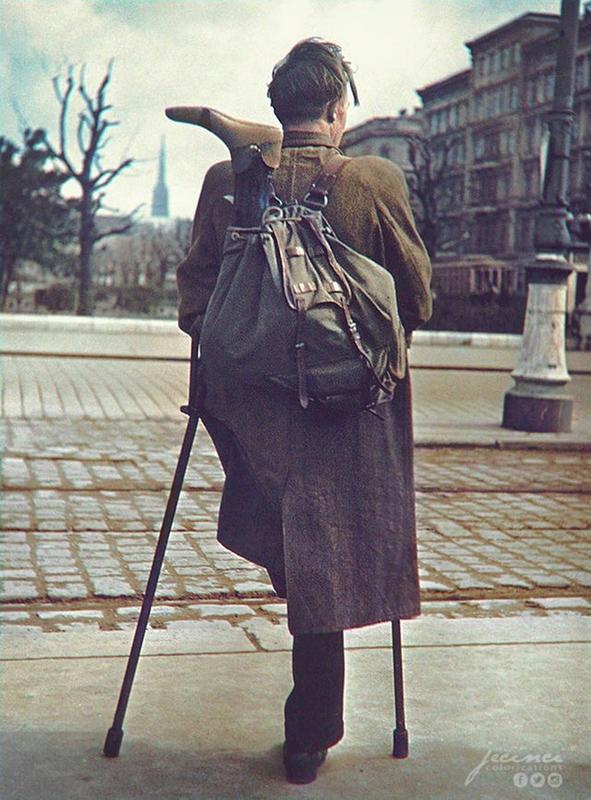
Ernst Haas worked as a photographer for over 40 years, and was one of the first to explore the medium as a means of creative expression, as opposed to merely capturing moments. Haas’ work is widely celebrated, and his book, The Creation, is one of the bestselling photography books of all time. Some of Haas’ most famous shots featured soldiers returning from WWII, and this shot in particular, which depicts a crippled soldier almost literally facing an uncertain future, has been praised for its evocative nature. Haas included the image in a photo essay titled “Homecoming”, which catalogued the aftermath of the war in Europe.
President-to-Be
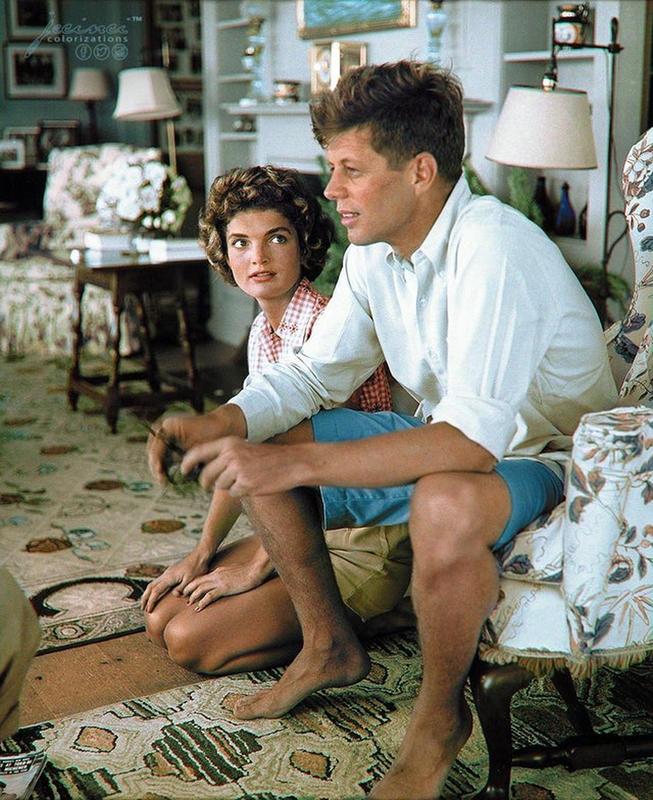
After the announcement of their engagement, John. F. Kennedy and Jacquelyn Bouvier took a vacation to the Kennedy family home in Cape Cod. Life Magazine dedicated an entire issue to the series of photos that were taken during the holiday, publishing a piece on July 20 under the headline “Senator Kennedy Goes a-Courting”. The couple’s love is clearly evident in the photos, although Jackie did mention that she was slightly displeased with this photo, as it gives the impression that she put him on a pedestal.
A group of bootblacks gathers around a Civil War veteran
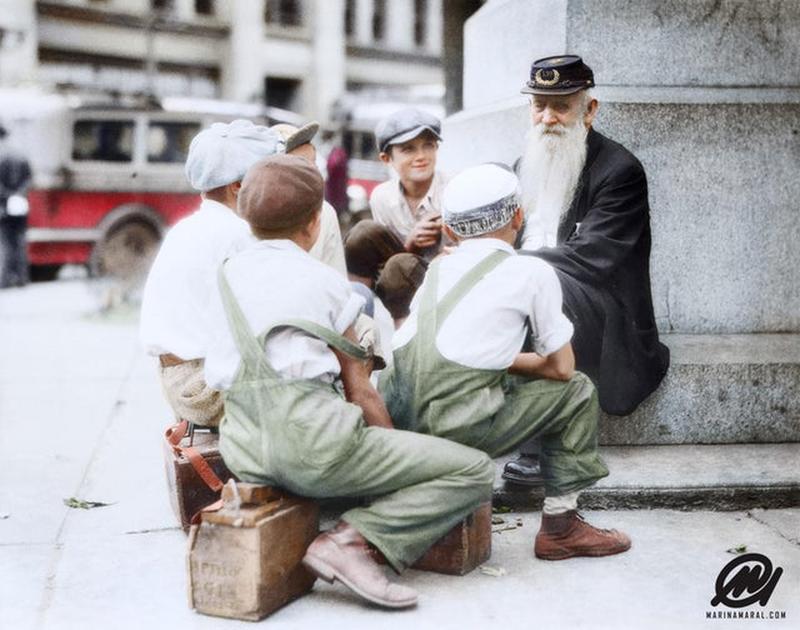
The American Civil War was extremely bloody, and roughly 620,000 soldiers died in the course of the war, a number that equalled 2% of the entire adult population. The war eventually came to an end after the decisive Battle Of Palmito Ranch, and the Union claimed victory over the South. Because many of the soldiers had been so young, Civil War veterans were not an uncommon sight well into the 20th century, and the last surviving veteran died as late as 1956. In this endearing photo, a group of bootblacks, children who earned money shining shoes, sit gathered around an elderly Civil War veteran, eagerly listening to his tales.
Young Winston Churchill
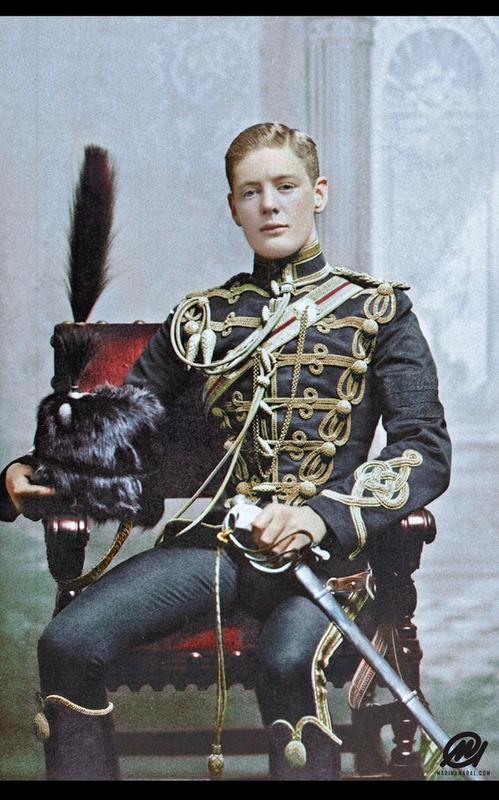
Winston Churchill is widely regarded as one of the greatest prime ministers to ever lead Britain. His “we will fight them on the beaches” speech served as the rallying cry that stoked British resolve and led to the stunning victory in the Battle Of Britain, one of the most pivotal moments of WWII. As a young man in the late 1800s, Churchill served in the 4th Queen’s Hussar’s Cavalry, and in 1915 he resigned from the government to rejoin the army, eventually finding himself on the Eastern Front. After returning to politics, Churchill worked his way up the ranks of the Conservative party, finally becoming party leader and prime minister. He had a close relationship with Queen Elizabeth II, who counted on him as close advisor.
Albert Einstein
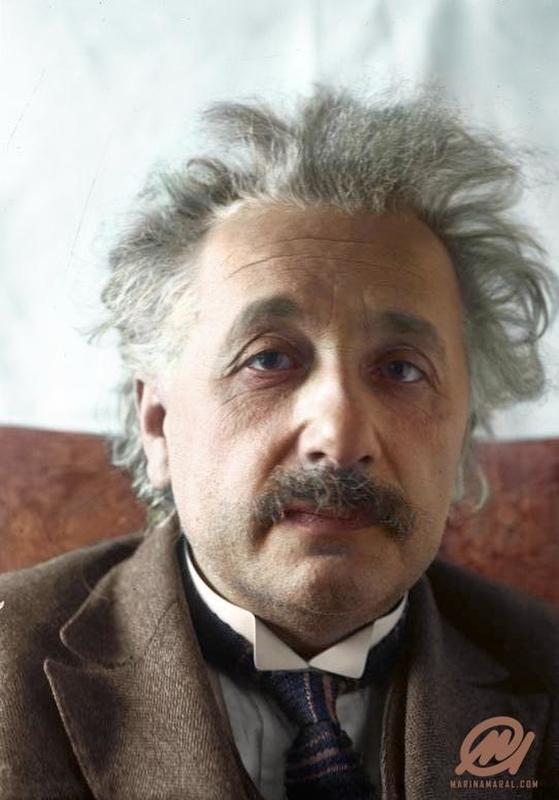
Whilst working as a patents clerk in Switzerland, Einstein filled his time by running thought experiments in his head, eventually resulting in the theory of relativity. This new theory shattered the existing Newtonian framework for physics, and finally gave an explanation for gravity. Einstein regarded himself as an artist who was working with the medium of science. In an interview in 1929, Einstein stated, “I am enough of the artist to draw freely upon my imagination. Imagination is more important than knowledge. Knowledge is limited. Imagination encircles the world”.
Geologist Thomas Griffith Taylor and Meteorologist Charles Wright
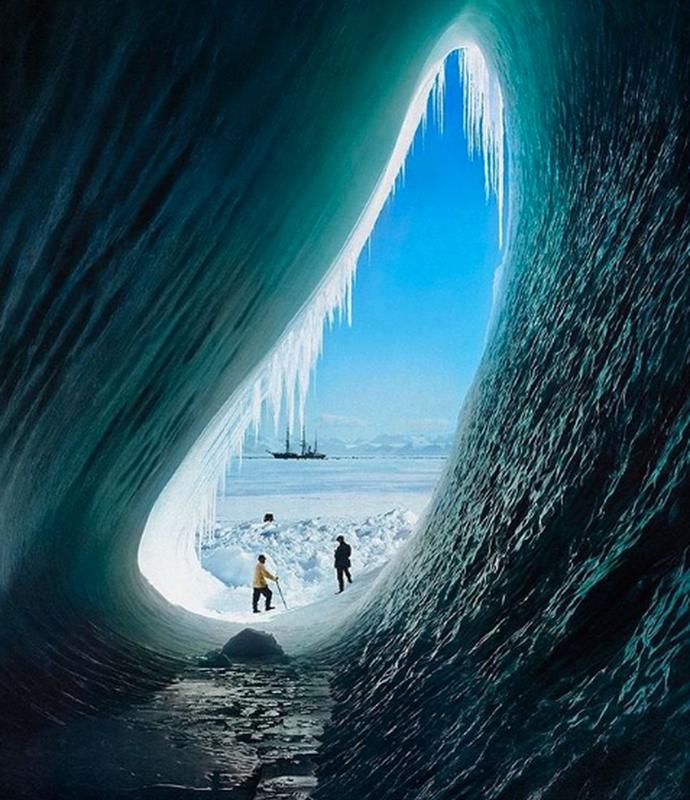
At the turn of the 19th century, adventurers were engaged in an epic race to reach the South Pole first. Determined to cement his place in history, British explorer Robert Falcon Scott set out on the Terra Nova Expedition, accompanied by a handful of men. The group experienced intense adversity on their journey, including vicious blizzards and transport animals dying from the cold. The men pressed on and, after almost an entire year, reached the South Pole on January 16, 1912. Unfortunately for the explorers, what should have been a joyous moment was ruined by the discovery that they’d been beaten by Norwegian explored Roald Amundsen, who had reached the pole a month before.
Charlie Chaplin in 1916, at the age of 27
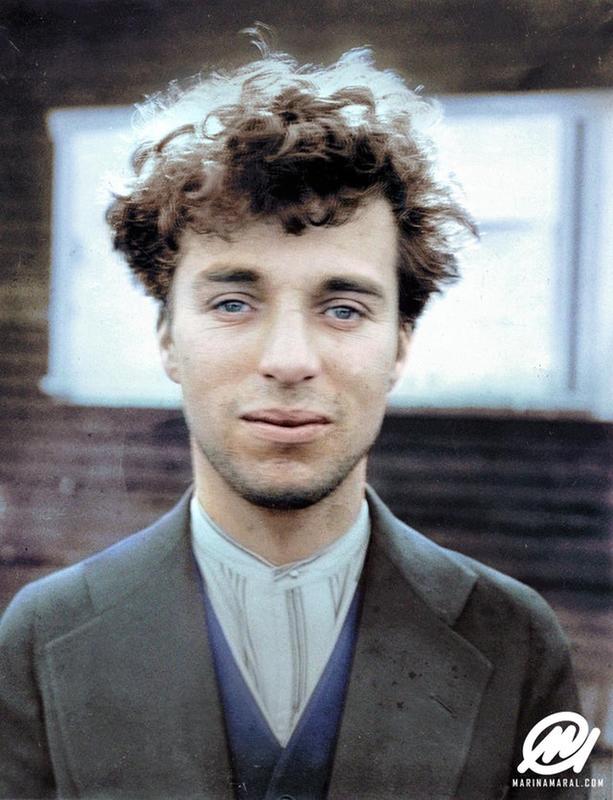
Charlie Chaplin’s most iconic character, The Tramp, is a vagrant who, despite his social standing, embraces the mannerisms of an upper class gentlemen. Chaplin’s inspiration for The Tramp came from his father, a music hall entertainer. Following the separation of his parents, Chaplin had no contact with his father, but drew on memories of him to create his signature character. In an interview later in life, Chaplin recalled, “It was just released whole from somewhere deep within my father, it was my father’s alter ego, the little boy who never grew up: ragged, cold, hungry, but still thumbing his nose at the world”.
Men of the Seaforth Highlanders
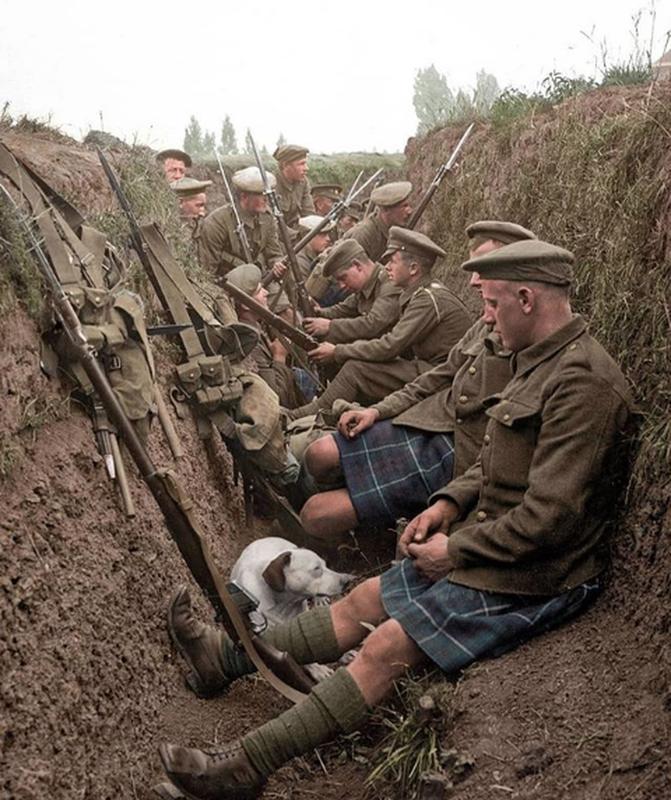
The Seaforth Highlanders were an elite Scottish regiment who took part in some of the fiercest fighting in WWI. Originally formed in 1881 following the merging of the 72nd Highlanders and the 78th Highlanders, the Seaforth Highlanders were initially deployed to India at the start of the war, but were soon dispatched to France, where they fought in the Battle of Givenchy. In the later stages of the war the regiment, who were instantly recognisable by their traditional kilts, were deployed to Iraq and Palestine.
Salvador Dali
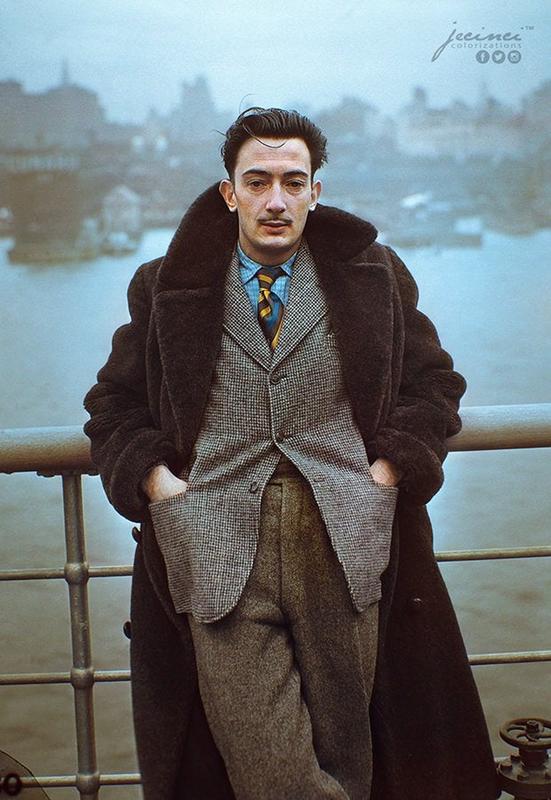
Salvador Dali was the most prominent artist to emerge from the Surrealism movement. Early on his career, Dali made several pilgrimages to New York, which was one of the art capitals of the world. On his first such trip, Dali and his wife Gala travelled aboard the Champlain, a ship which departed from France, and the artist was placed in a cabin next to the engine room. After a passenger enquired whether he was irritated by the loud sounds, Dali, in typically offbeat fashion, replied, “I am next to the engine so that I’ll get there quicker.”
Eunice Hancock
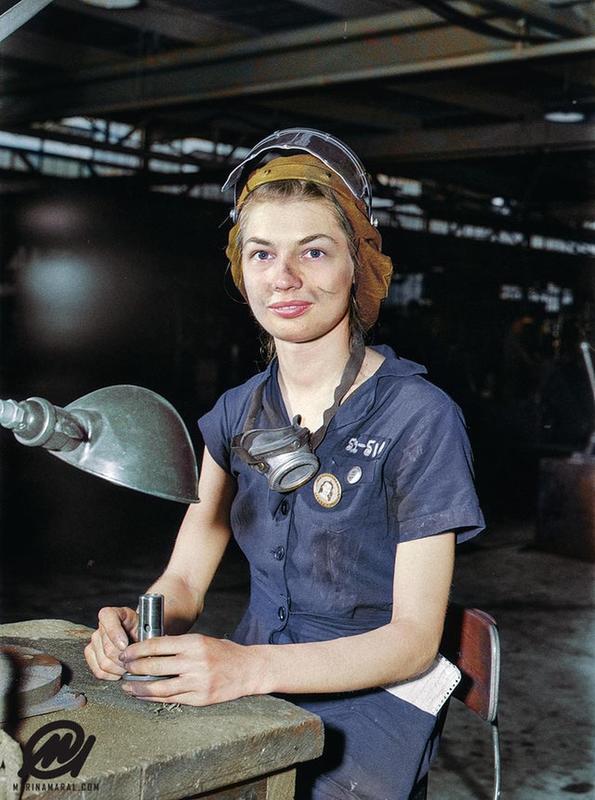
On September 3, 1939, Britain declared war on Germany. The same day, parliament passed The National Service (Armed Forces) Act, imposing conscription on all males aged 18-41. Across the course of the war, around three million British men served in the military. This exodus of men left a gaping hole in the British labor market, and women, who had previously been confined to the role of housewife, stepped up. Nearly two million women across the country took on jobs in manufacturing, utilities and transportation. Many women also worked on in factories, producing ammo for the military.
Pablo Picasso
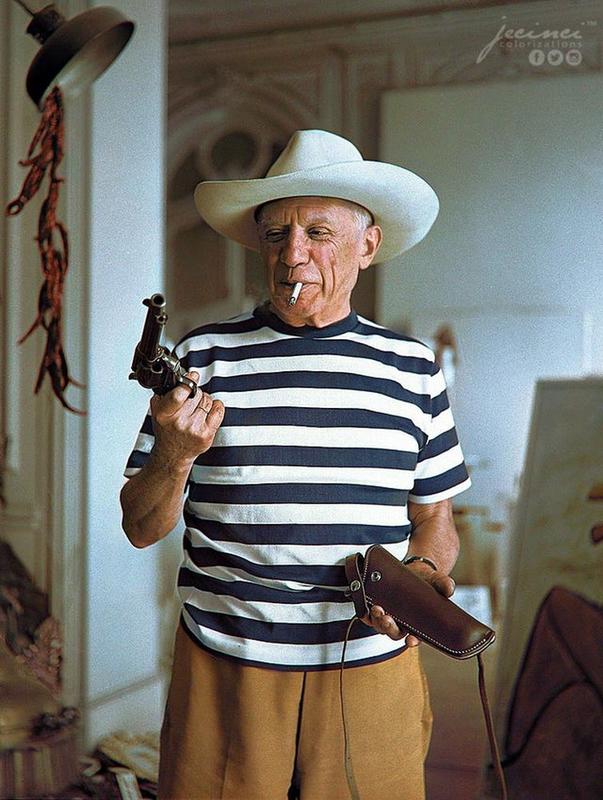
Pablo Picasso is arguably the most well-known artist to ever live, perhaps rivalled only by Vincent Van Gogh. However, unlike Van Gogh, Picasso saw great success within his own life, and by the time of his death in 1973 had amassed an estimated net worth of $50 million. The painter was known to be a charismatic character and mingled frequently amongst the intellectual fringe of Parisian society. During WWII he was often harassed by the Gestapo, forcing him to lie low, but after the war’s end he continued producing masterpieces at a prolific rate.
Sophie Scholl
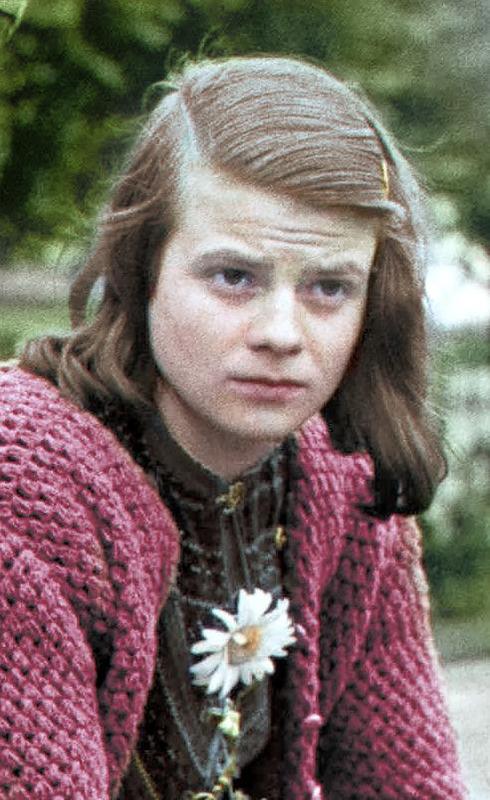
Sophie Scholl was a German student and dissident who stood up to the Nazi party, paid the ultimate price. One of the most prominent members of the White Rose resistance group, Scholl openly resisted Nazi rule, and tried to recruit others to her cause. In 1943 she was arrested for handing out anti-war leaflets, convicted of treason and sentenced to death. Prison guards were impressed with her bravery on the day of her execution, and she remained defiant in her final words, stating, “what does my death matter, if through us, thousands of people are awakened and stirred to action?”
Popeye
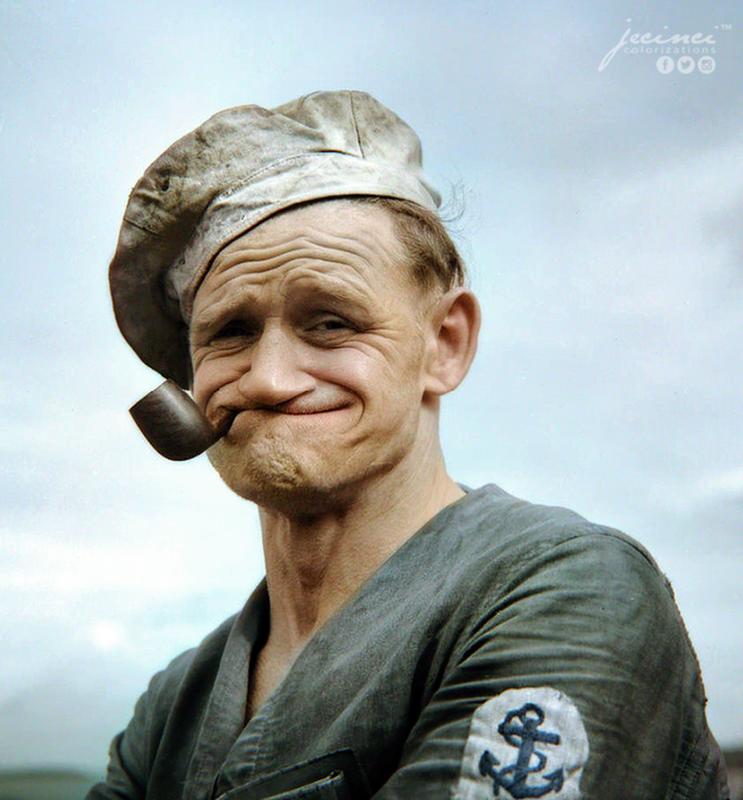
There has been much speculation that this photo was the inspiration for the character Popeye, the spinach guzzling, one-eyed sailor who was created by American cartoonist Elzie Crisler Segar. However, whilst the resemblance is certainly uncanny, this photo was snapped in 1940, 13 years after the first Popeye comic strip. The anonymous sailor was a member of the British navy, and the shot was taken about the HMS Rodney. Whilst he wasn’t the inspiration for the character, he was referred to as Popeye by the rest of the crew, which he clearly leaned into.
West meets East
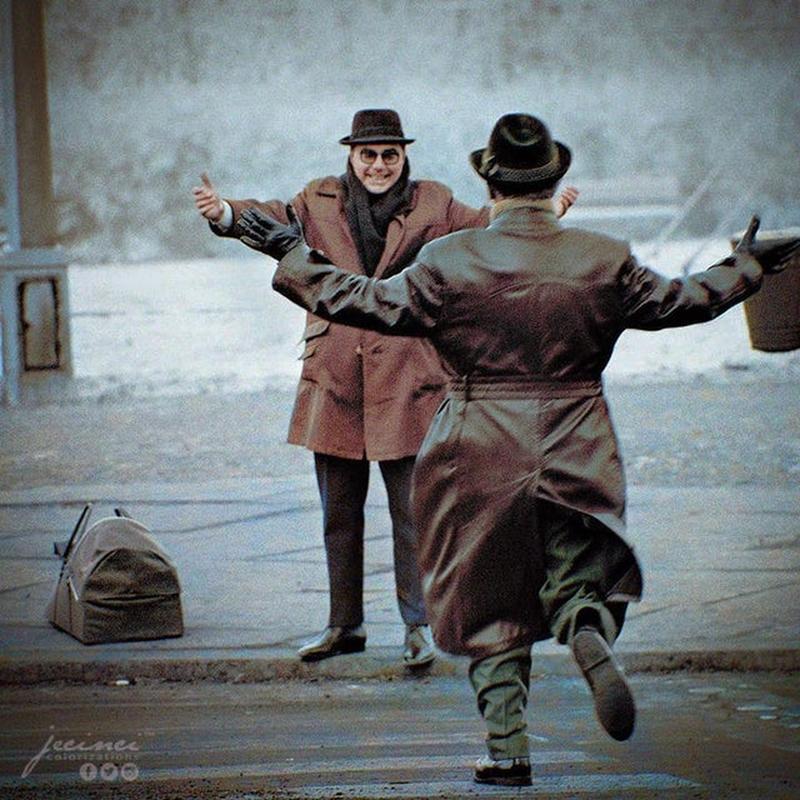
The collapse of the Berlin Wall remains one of the most symbolic moments of the 20th century. After the end of the Second World War, the German capital was divided between the Soviet Union and allied Western forces, resulting in the construction of the wall. Many friends were separated by the structure, and when it came down in 1989 there were thousands of joyous reunions, including this one. The moment marked the beginning of the end for the Soviet Union, which would disintegrate two years later.
Poland’s World War II ruins
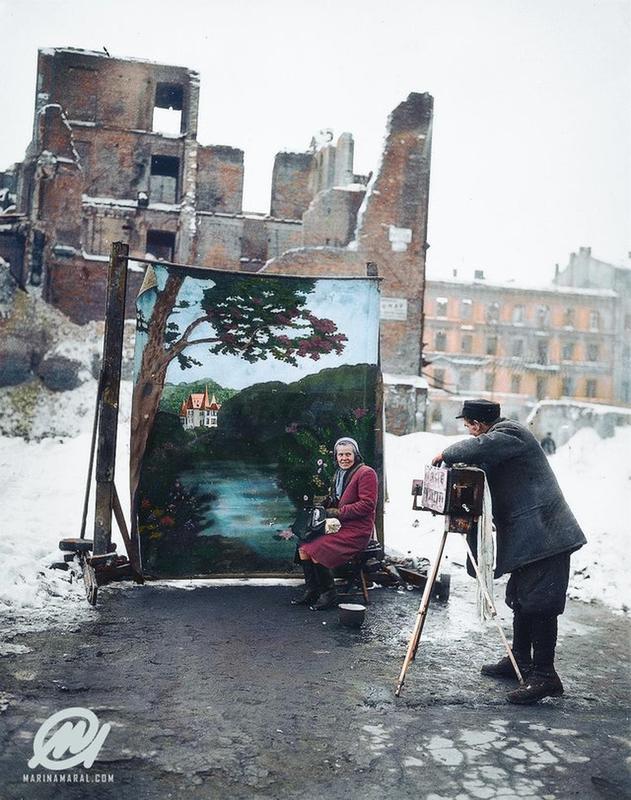
Hitler’s invasion of Poland led to the breakout of WWII, and the country remained occupied for most of the war. Although little of Europe escaped unscathed, Poland was particularly devastated, and much of the country was reduced to an apocalyptic wasteland. So many of the country’s structures had been destroyed that photographers were unable to find backdrops for their portraits, so they began creating their own, often painting idyllic landscapes that contrasted harshly with the country’s decimated architecture.
Tricolor flies from the Eiffel Tower
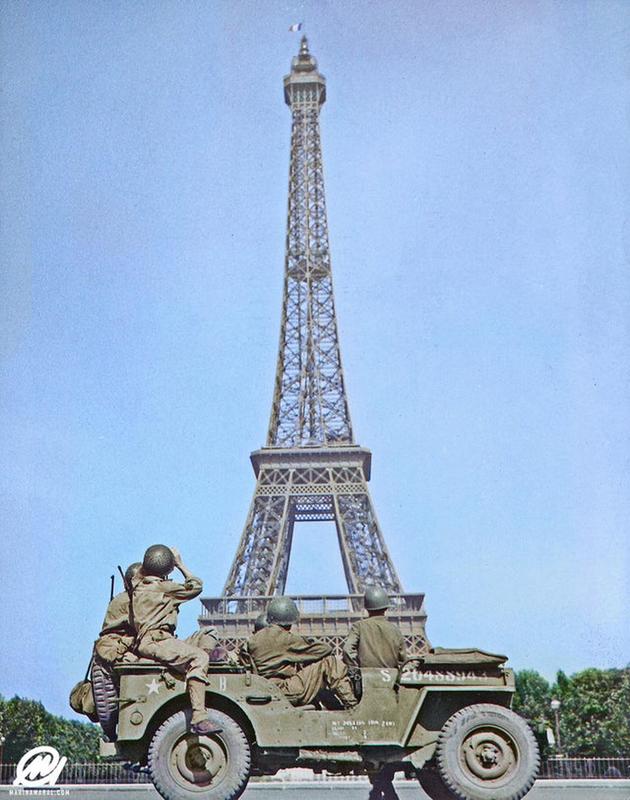
Paris was one of the first major European cities to fall in The Second World War and remained in Nazi hands until midway through 1944. Buoyed by the success of the allies at Normandy, French resistance fighters mounted an uprising and reclaimed part of the city from its occupiers. By the time allied soldiers arrived on August 25, German forces had already been significantly weakened and didn’t put up much of a fight. This photo captures members of the US 4th Infantry Division gazing at the Eiffel Tower shortly after the city’s liberation.
American troops of the 1st Infantry Division
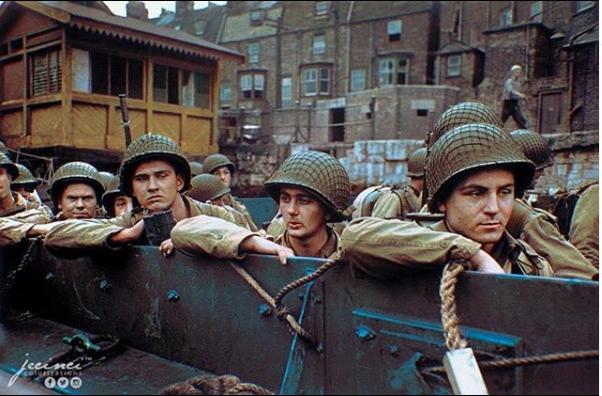
The Battle of Normandy marked the turning point of The Second World War. Up until then, allied war efforts had been aimed at halting the spread of the German military, but in June 1944 allied soldiers began reclaiming territory from Hitler’s forces. The Battle of Normandy featured some of the most relentless fighting on the Western Front and lasted almost two months. In his final address to soldiers bound for Normandy, Eisenhower famously proclaimed, “You are about to embark upon the Great Crusade, toward which we have striven these many months. The eyes of the world are upon you.”
Crow Native Americans
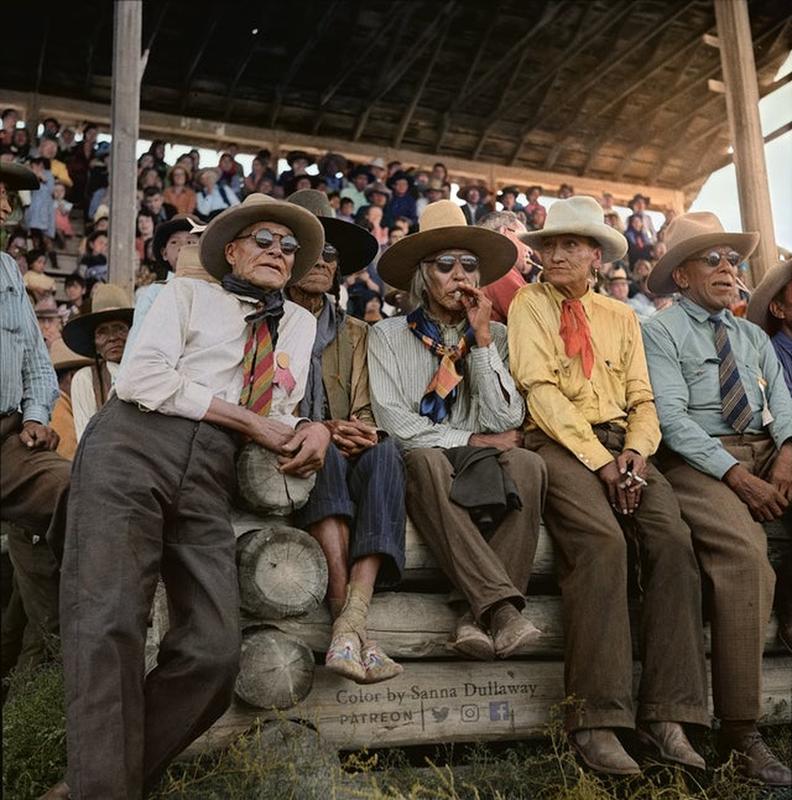
Held during the third week of August near Billings, Montana, the Crow Fair unites all the Native American tribes of the Great Plains, with tens of thousands attending every year. The fair, which was first held in 1904, features all the usual staples of American fairs, including youth events, horse shows and rodeos. However, the event also features traditional Native America rituals. Given the way that Native American culture has been trampled in the US, the fair provides a fantastic way for such traditions to be celebrated and preserved.
Drought refugee from Polk, Missouri
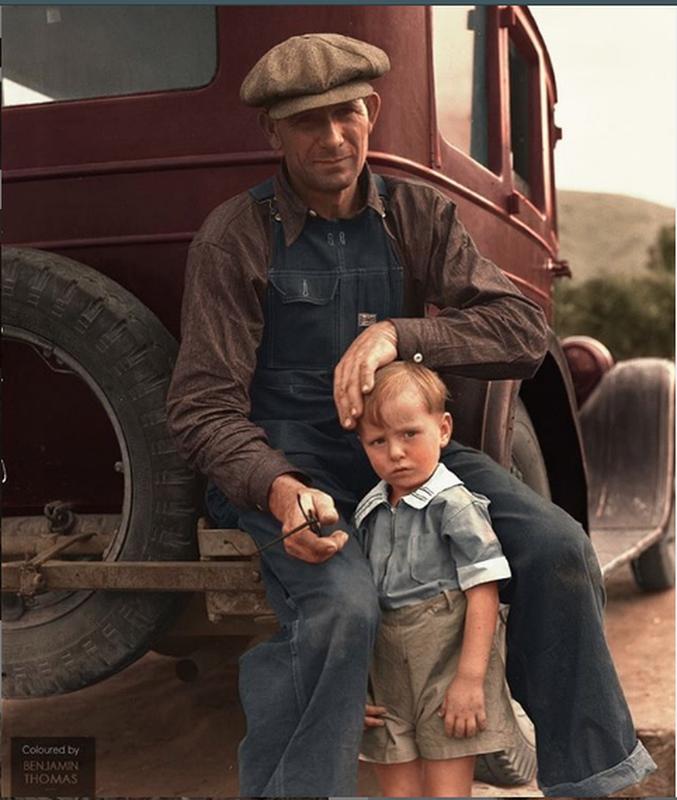
The dust bowl was a series of catastrophic storms that wrought havoc on the American and Canadian prairies during the 1930s. The dust bowl also forced thousands of American farming families to abandon their properties and flee to the pacific coast, where they were treated with hostility and suspicion. The effects of the dust bowl were compounded by the fact that it occurred during The Great Depression, and this photo captures the fear and uncertainty faced by Americans who had essentially been made migrants in their own country.
Dutch Resistance fighters armed with captured German weapons
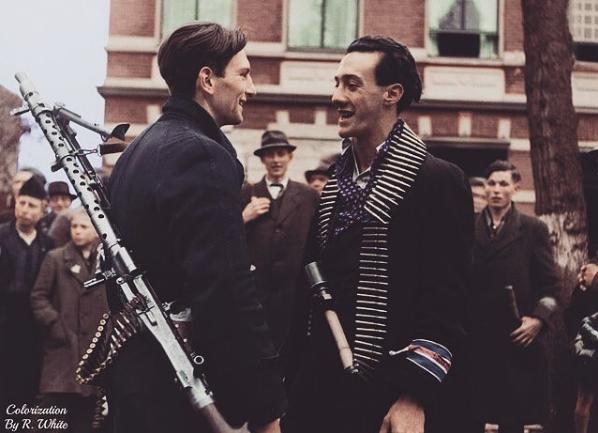
In the early days of The Second World War, Germany’s armed forces pulled off a series of stunning military victories, rapidly consolidating much of Europe under German control. One of the countries that fell was The Netherlands, and a determined resistance movement quickly formed. Dutch resistance fighters helped the allies by providing them with counterintelligence, as well as carrying out domestic sabotage and assassinations. The Netherlands was eventually liberated in 1944, with the efforts of the Dutch resistance playing a key role.
John F. Kennedy
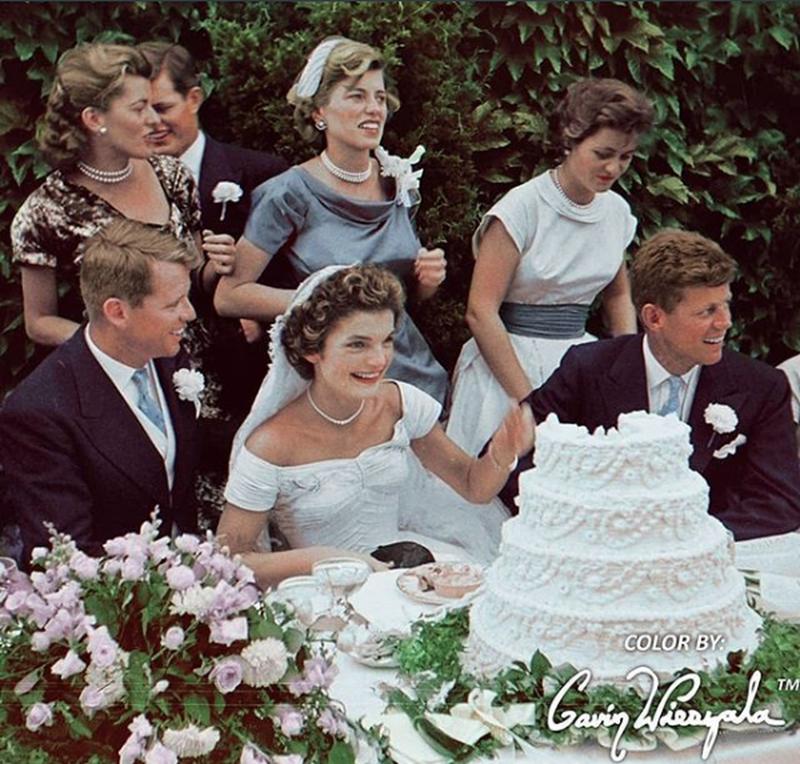
John. F. Kennedy and Jacqueline Bouvier, at the time regarded as “America’s couple”, followed their idyllic vacation to Cape Cod with a storybook wedding on Rhode Island. The Kennedys tied the knot on September 12, 1953, and the event was a media sensation. The closest thing America ever had to a royal wedding drew crowds of spectators, who gathered at St. Mary’s Roman Catholic Church in the hope of catching a glimpse of the newlyweds. Richard Cushing, the Archbishop of Boston, personally officiated the wedding.
Oscar Wilde
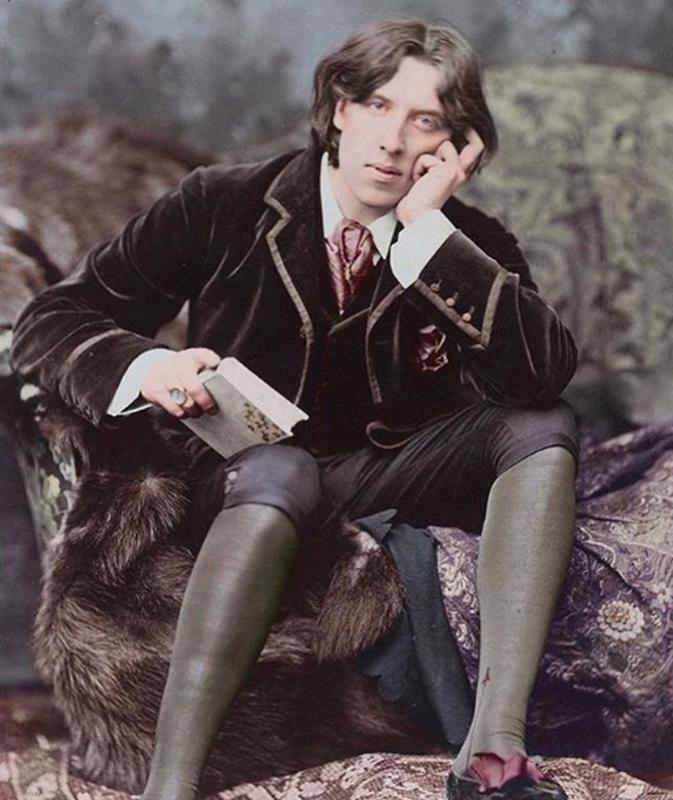
Oscar Wilde was a literary phenomenon, penning many celebrated novels, plays and poems. He also delivered some truly memorable quotes, including his famous call for originality, “be yourself, everyone else is already taken.” In 1882 Wilde visited the United States and spent a year travelling through various states, giving lectures as he went. On one occasion he spent an evening in a Colorado silver mine, saying of the men who worked there, “poems everyone one of them. A complete democracy underground.”
King Ferdinand and Queen Marie of Romania
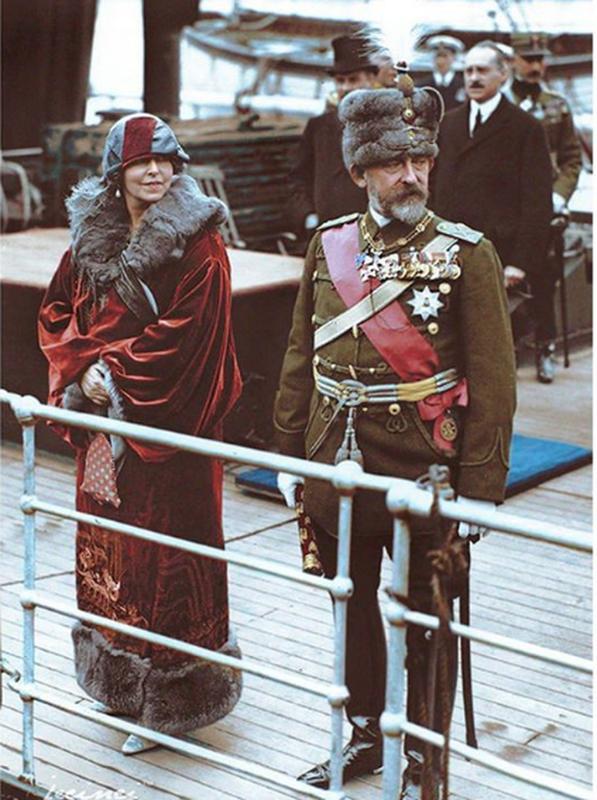
Marie of Romania was the last Romanian Queen and the wife of King Ferdinand I. Marie was born in Edinburgh in 1875, and married Ferdinand, who was at that point just a prince, 17 years later. As a result of their marriage, Ferdinand allied himself with Britain against Germany during WWI. After the war, the Ferdinand’s were welcomed warmly during a diplomatic tour by King George V, who said of the couple, “apart from the common aims which we pursue, there are other and dear ties between us. Her Majesty the Queen, my dear cousin, is British born.”
Martin Luther King Jr. at the pulpit
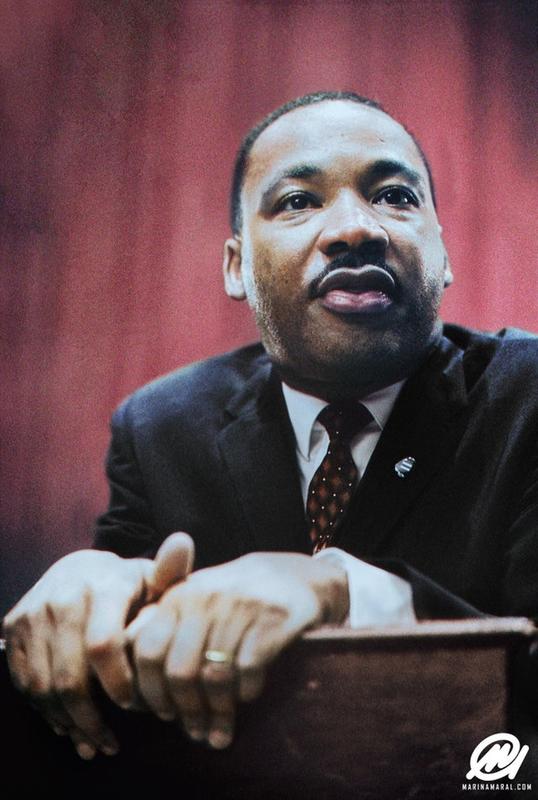
Martin Luther King Jr. was a preacher who spearheaded the Civil Rights movement in America throughout the 50s and 60s. A gifted orator, King was most at his element when behind the pulpit, and his “I have a dream” speech, is often cited as one of the best speeches ever given. King’s approach of radical love and acceptance, even in the face of great hostility, earned him the scorn of some civil rights activists, including Malcolm X, but ultimately his tactics proved successful and the South was desegregated.
Senator John F. Kennedy, talking to his brother and campaign manager, Robert F. Kennedy
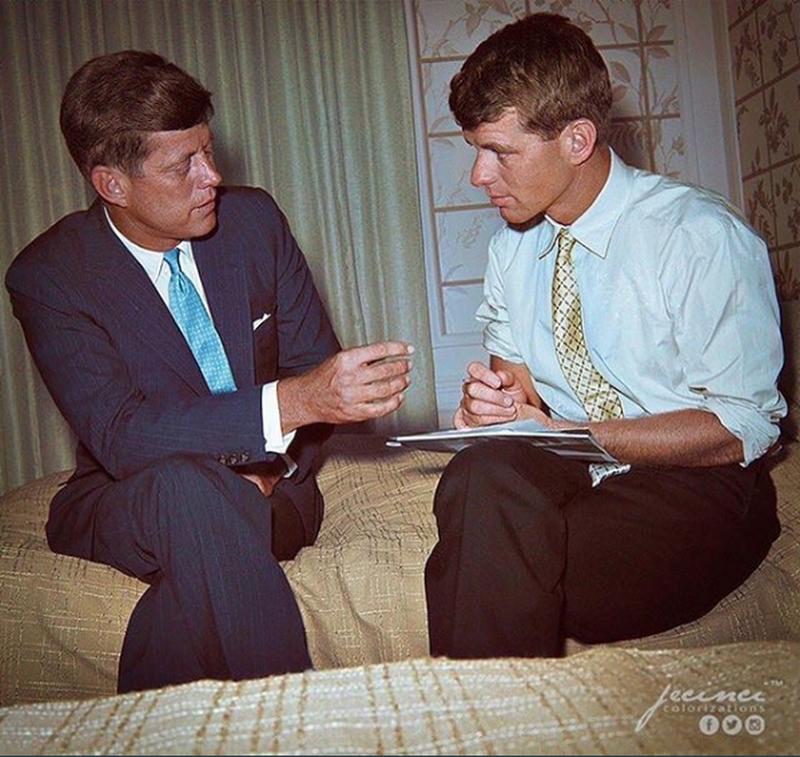
In July 1960, Senator John F. Kennedy, then a young firebrand in the Democratic Party, caught the elder statesmen of his party off guard and emerged from the Democrat National Convention as leader. Kennedy’s campaign was managed by his brother, Robert, and this photo, taken by John Leongard, captures the moment after the convention when John decided to pick Lyndon B. Johnson as his running mate, a decision which apparently stoked the ire of his brother, who was known to despise Johnson. According to reports, Robert stormed out of the hotel room, uttering a string of expletives.
Princess Elizabeth
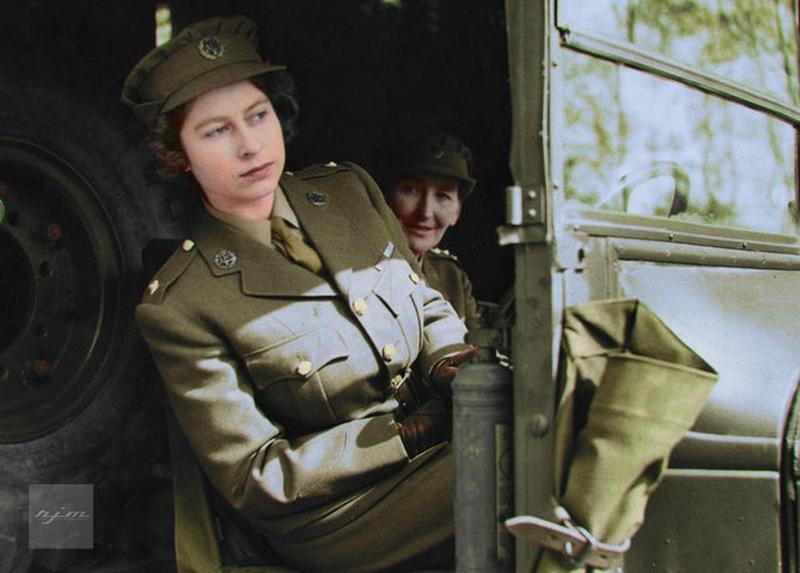
During The Second World War, the entire country united behind the war effort, and it seemed that everyone wanted to help in whatever way they could. Princess Elizabeth, the future queen, was no exception. She pestered her father, George VI, until he finally relented and permitted her to join the Women’s Auxiliary Territorial Service, where she was trained as a mechanic and truck driver. She also served as an ambulance driver on occasion. The future monarch of the country getting her hands dirty to help was a huge boost of morale and lifted the nation’s spirits.
Rosa Parks & Martin Luther King Jr.
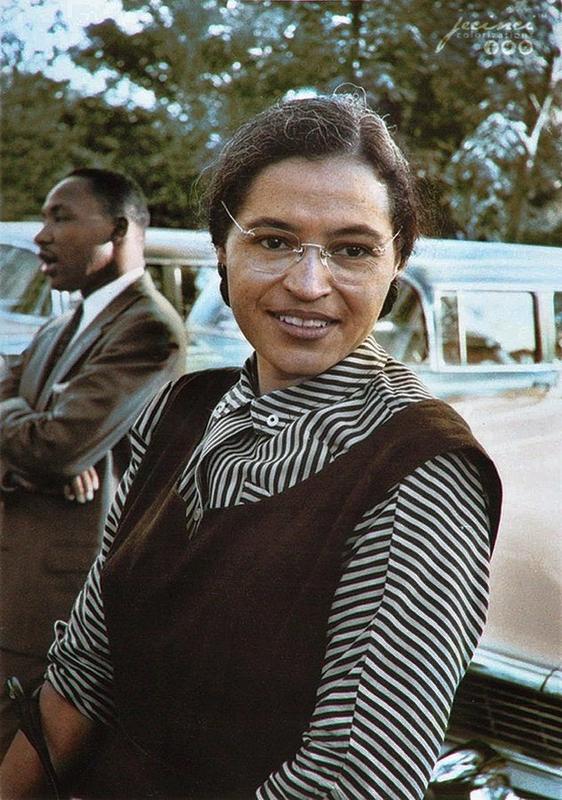
Martin Luther King Jr. might be the one who carried the Civil Rights movement to victory, but it was Rosa Parks who lit the fuse. Parks was working as a seamstress in Montgomery, Alabama, when she boarded a bus on December 1, 1955. Due to segregation laws, Black passengers were required to move to the back of the bus, but Parks refused as there were no seats available. The seamstress was publicly arrested, and the incident caused Black frustrations in the city to boil over, leading to a 13-month boycott of Montgomery’s bus system, one of the largest acts of activism in the country at the time.
Isambard Kingdom Brunel
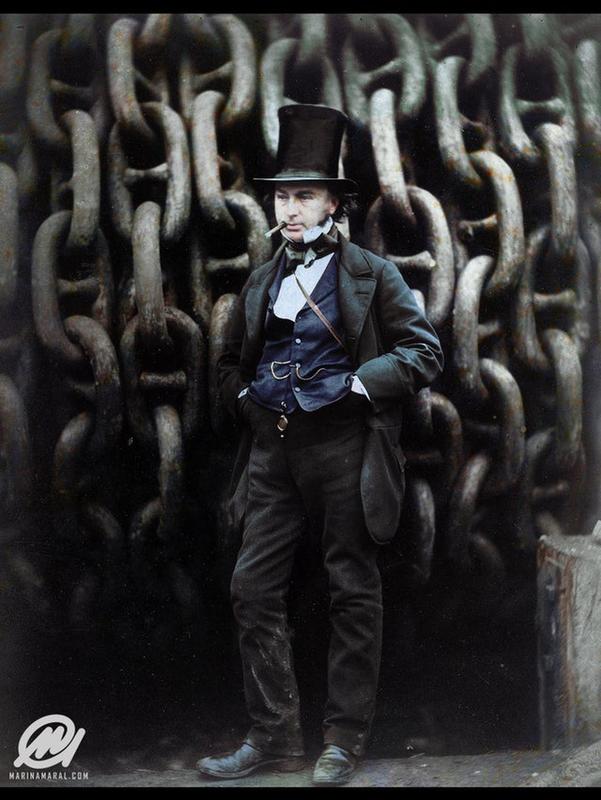
Isambard Kingdom Brunel was a prolific engineer who conceived the idea for the Great Western Railway, a network of tunnels, bridges and viaducts that snake across England and the West Midlands. Widely hailed as “one of the most ingenious and prolific figures in engineering history”, Brunel also designed several ships that were capable of transatlantic voyages. One of his vessels, the ‘Great Britain’, was the world’s first iron-hulled, screw propeller-diver, steam-powered passenger liner. In 2006, the Royal Mint honoured Brunel’s legacy by issuing a £2 coin that bears his likeness.
Titanic Orphans
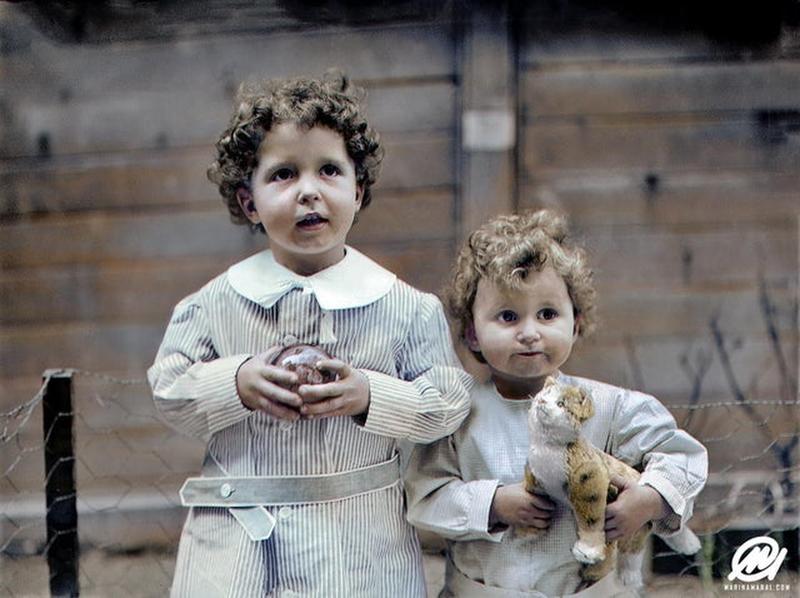
On the night of April 14, 1912, the supposedly unsinkable RMS Titanic struck an iceberg, rapturing its hull and causing the vessel to sink beneath the frigid waters of The Atlantic Ocean. More than 1,500 people perished, most of them men, as women and children were given priority on the limited lifeboats. The boys in this picture were French, and after their father placed them into a lifeboat he was told to remain on the ship. They were temporarily placed into the care of a French speaking survivor before being returned to their mother in Nice.
Tolstoy
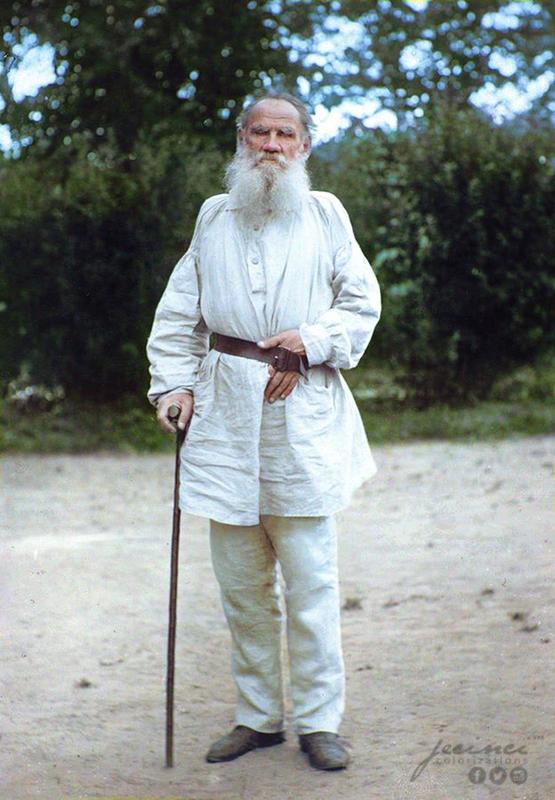
War And Peace, the epic volume penned by Russian literary master Leo Tolstoy, has the unusual distinction of being the book readers most frequently lie about having read. This photo of the renowned author was taken two years before his death. Tolstoy’s writings from that time grapple with his own mortality, and in his final days he wrote: “love is life. Everything that I understand, I understand only because I love. Everything is, everything exists, only because I love. Everything is united by it alone. Love is God, and to die means that I, a particle of love, shall return to the general and eternal source.”
Tsar Nicholas II of Russia
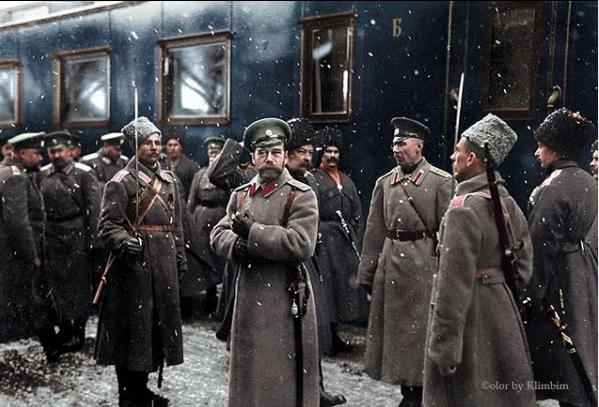
Nicholas II was the last Emperor of Russia. His reign lasted from 1894 till 1917, during which he time he lent his support to political and economic reform. His grip on power began to slip during WWI, as his absence from the frontlines of the war and his increasing dependence on Rasputin began to cause unrest amongst his subjects. The Tsar had been warned that the influence of Rasputin, whom many considered to be insane, was likely to spell trouble, and in 1915 the mad monk was assassinated by a group of nobles. Nicholas took the hint and abdicated in 1917, but it wasn’t enough – the Tsar and his entire family were rounded up and killed during the Bolshevik revolution.
Jesse Owens
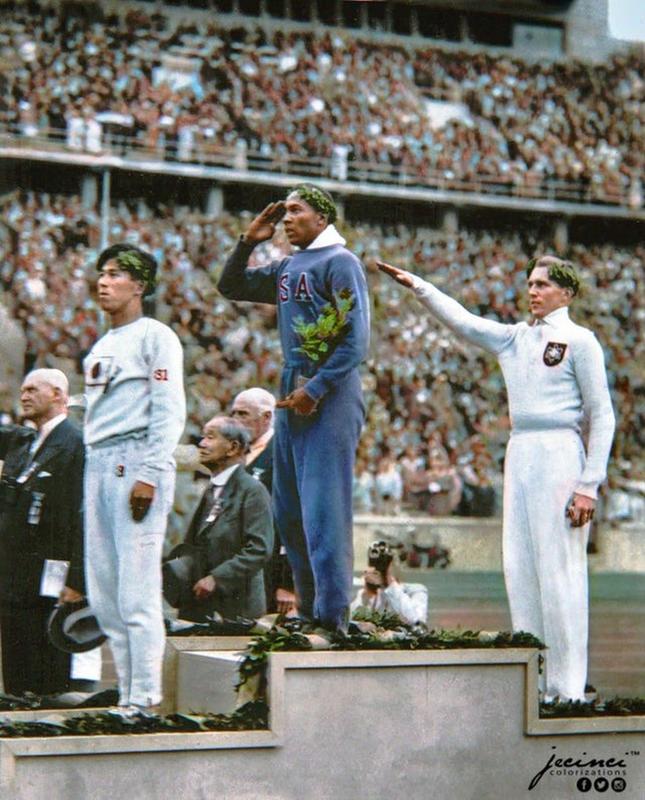
There is something extremely haunting about this 1936 photo, which depicts Jesse Owens standing on the Olympic podium having just won gold, whilst beside him a German competitor throws a Seig Heil. Owens dominated in the long jump, the 400 metre the 100 and 200 metre dashes, and the relay race. America was unsure about whether it should send athletes to the Olympics, which were held in Berlin, due to the rising threat of Nazism. However, Owens stated that he didn’t care about politics, and just wanted to show the world that he was the best, which he most certainly did.
Winston Churchill & Charlie Chaplin
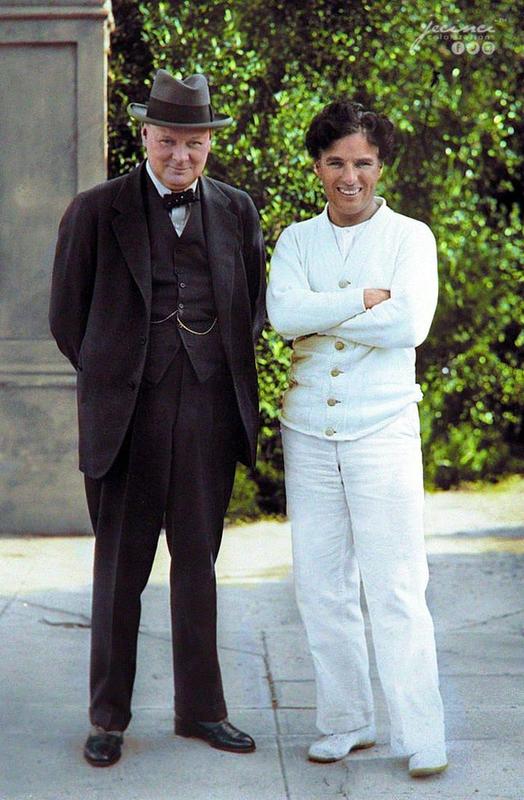
Charlie Chaplin was able to count some of history’s most important figures amongst his fans. As well as being adored by Einstein, Chaplin’s work was also loved by Winston Churchill, who was an avid cinema enthusiast. Despite being at odds politically, the two men shared a mutual admiration, and Churchill hosted Chaplin at Chartwell, the country residence used by prime ministers, on two separate occasions. Chaplin also dined with Churchill at his own home, entertaining his children with tricks, and trading barbs about revolutionaries like Gandhi.
Rita Hayworth
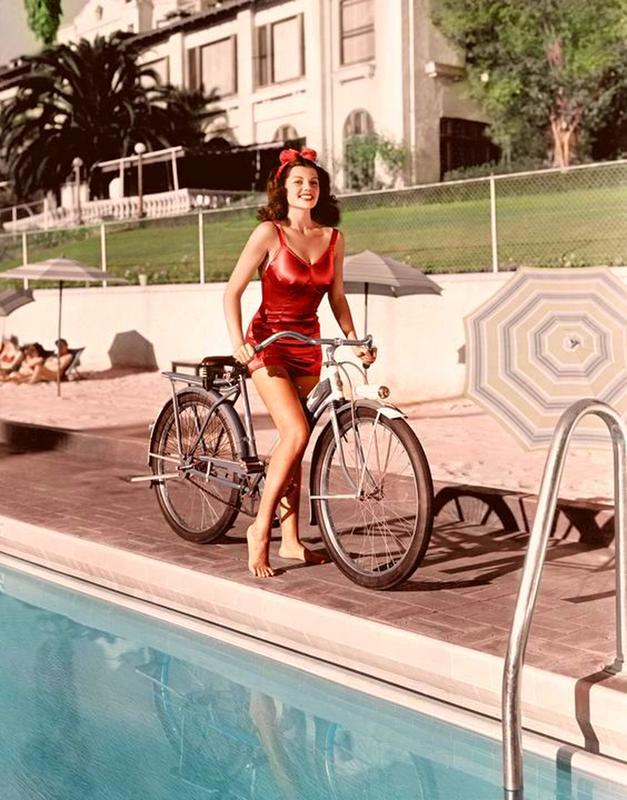
Rita Hayworth was an American actress and producer, with a career spanning 37 years and 61 films. During the 40s Hayworth – who was born Margarita Carmen Cansino – was one of the most south after stars in Hollywood. In an interview with The New York Times, director George Cukor said of the star: “she had natural elegance. I saw that immediately, before they fixed her hair, something I may have contributed to did ask for Rita on her first loan‐out, ‘Susan and God,’ where she really had little to do. Yes, I knew, right away, she wasn’t just another pretty girl. Rita made some of her material better than it was.”
A young Iranian woman hits the beach, 1960s
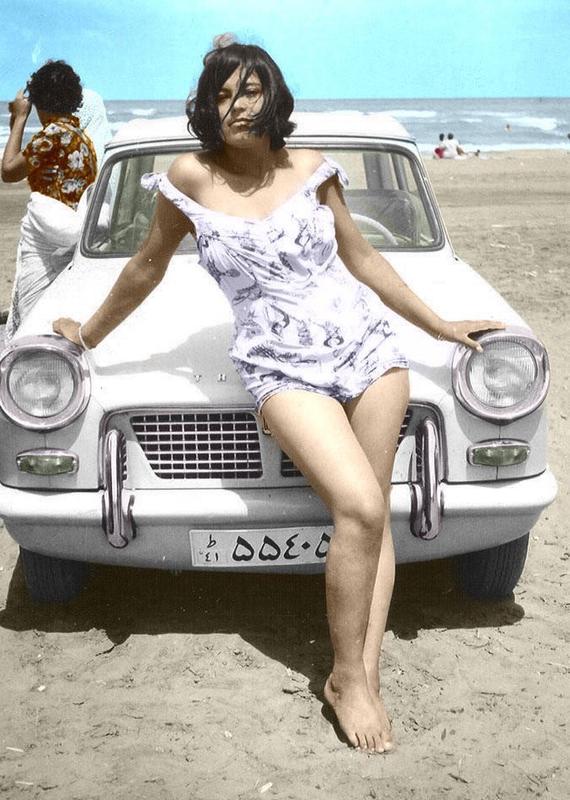
Before the Islamic Revolution of 1979, Iran was viewed as one of the most liberal Islamic states in the world. Unlike other prominent nations in the Middle East, such as the UAE and Saudi Arabia, women were permitted to wear Western clothing and weren’t forced to wear traditional veils and burqas. Iranian women would often congregate on the beach, as in this photo, where they were free to wear swimming costumes and enjoy the ocean. Since the revolution, the government has deployed its notorious Guidance Patrol, also known as the morality police, to ensure that women in public maintain traditional Islamic dress codes.
Grace Kelly
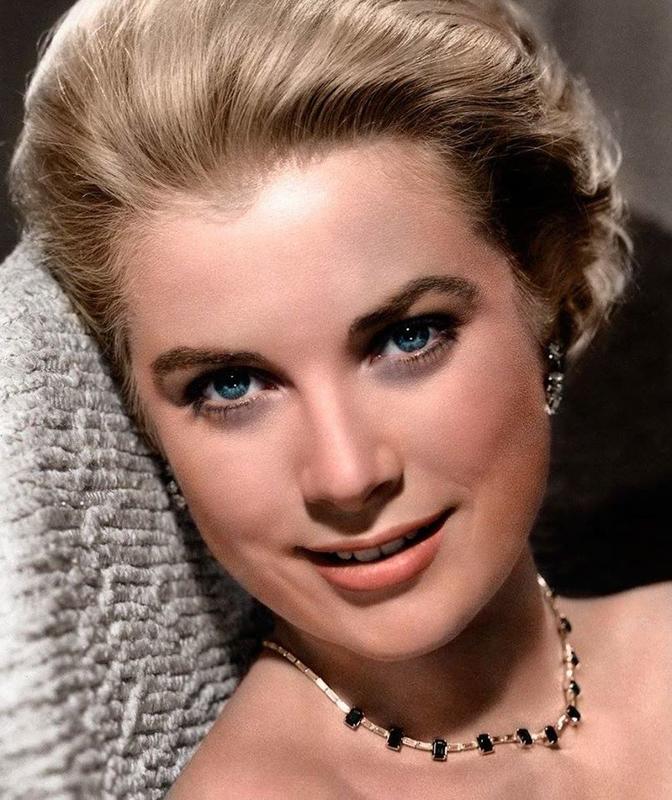
Gracy Kelly rose to prominence in the early 50s, starring in a number of significant films including Mogambo and High Noon. However, at the peak of her acting career Kelly met and fell in love with Prince Rainier III of Monaco. When the two married in 1956, Kelly left Hollywood behind and stepped into her royal duties, becoming the beloved Princess of Monaco. Tragically, whilst driving in 1982, Kelly suffered a stroke which caused her to lose control of her car. The vehicle veered off the road and plunged down the side of a mountain, fatally injuring the princess.